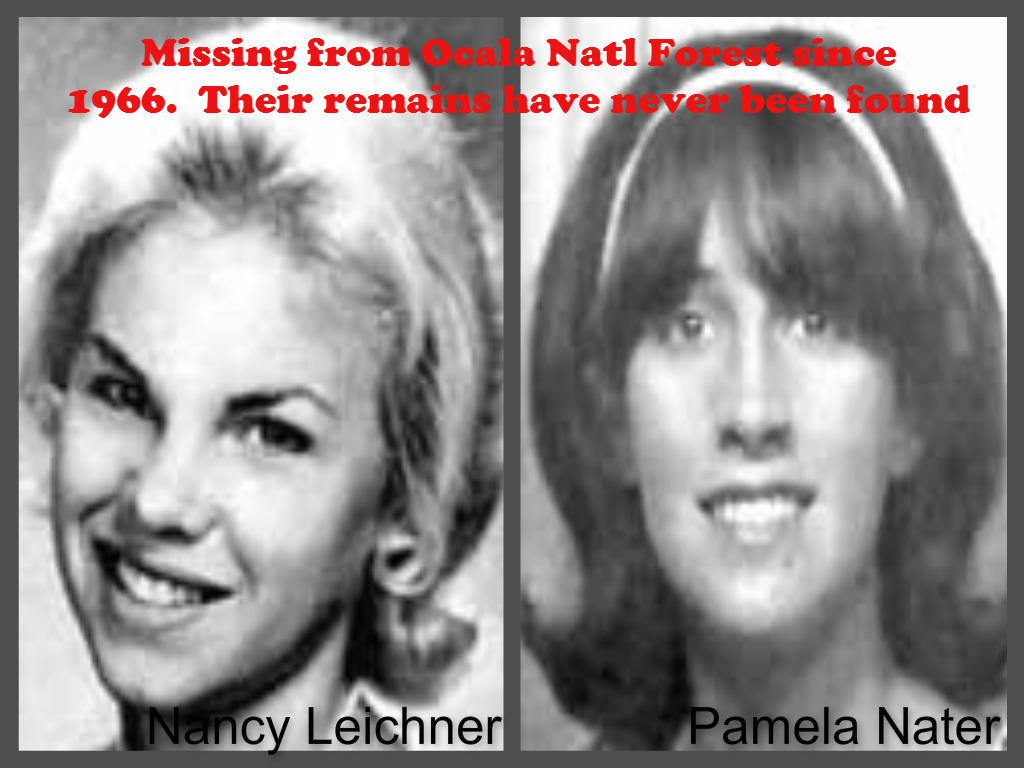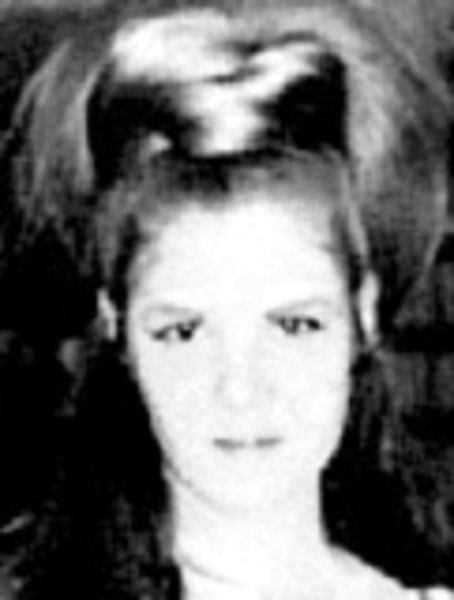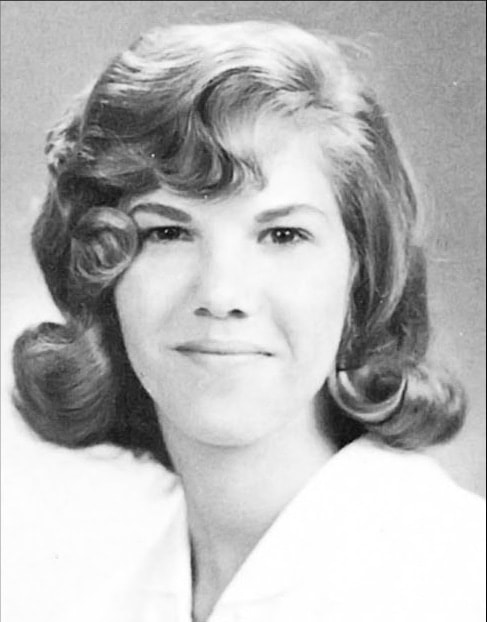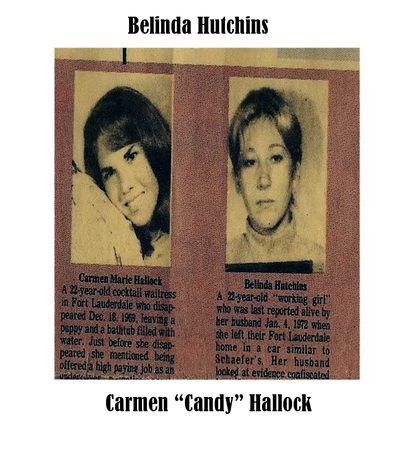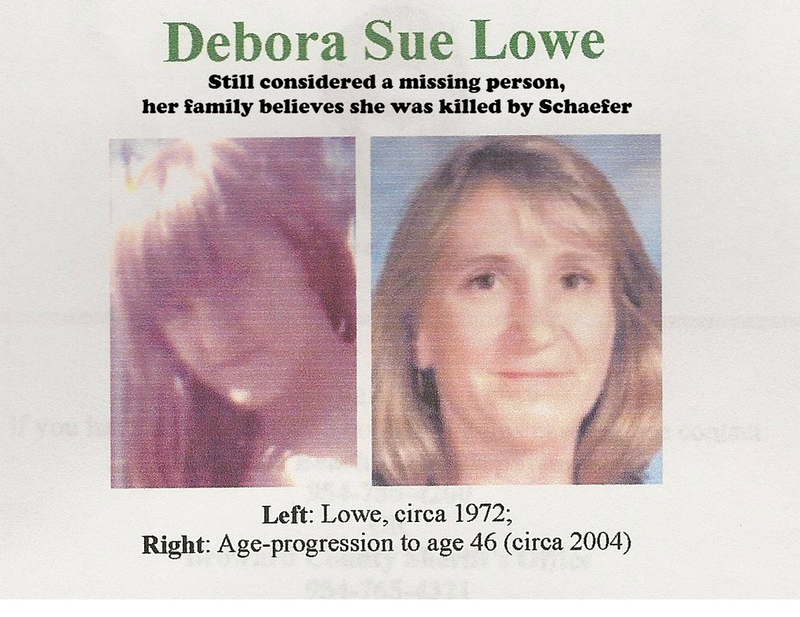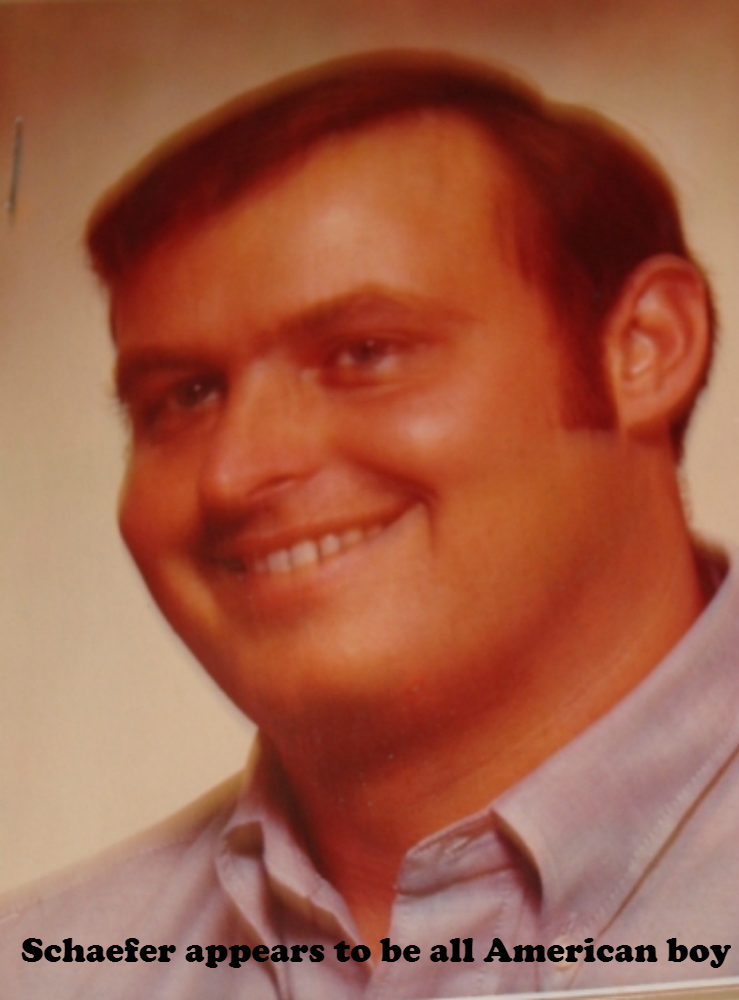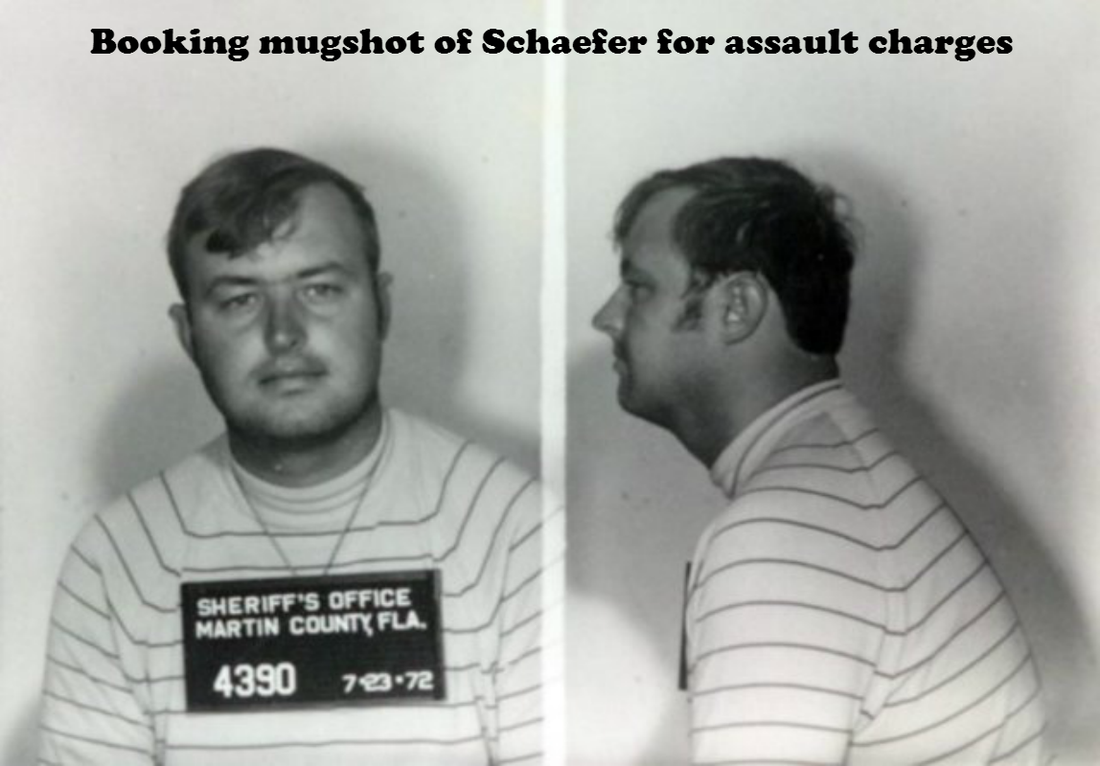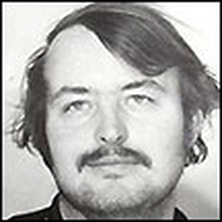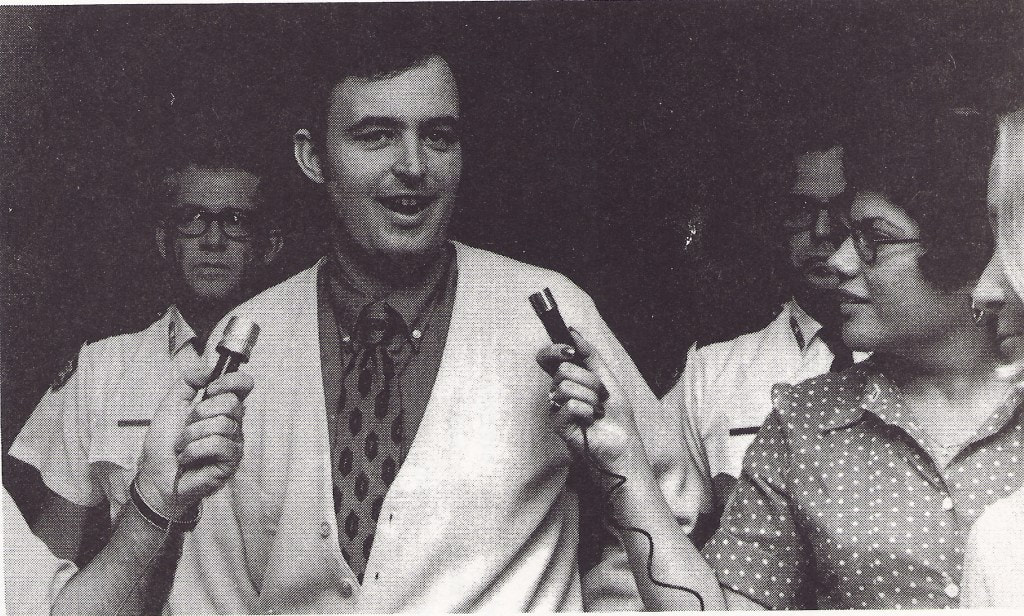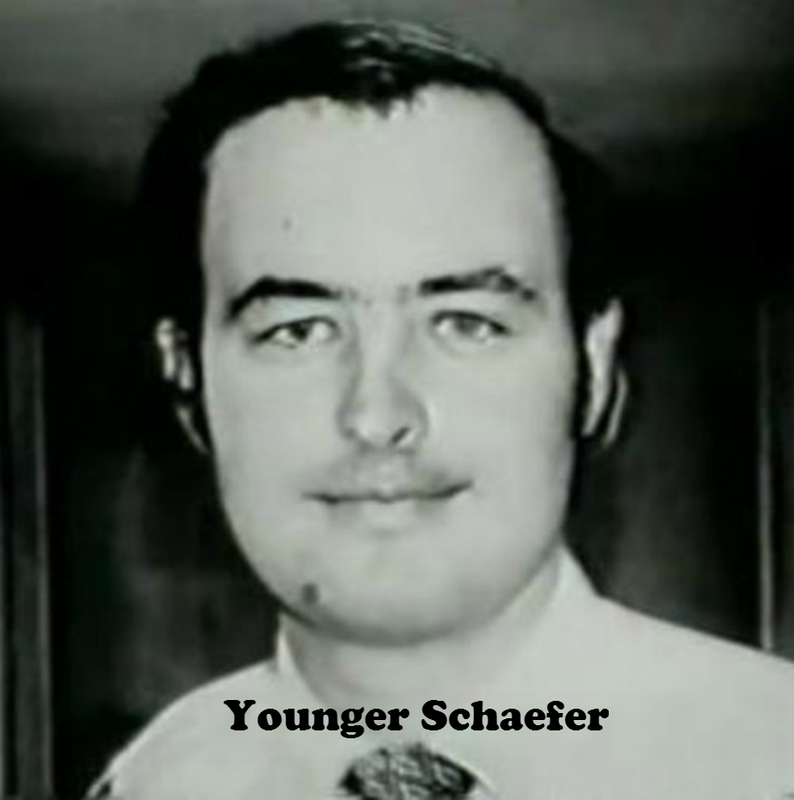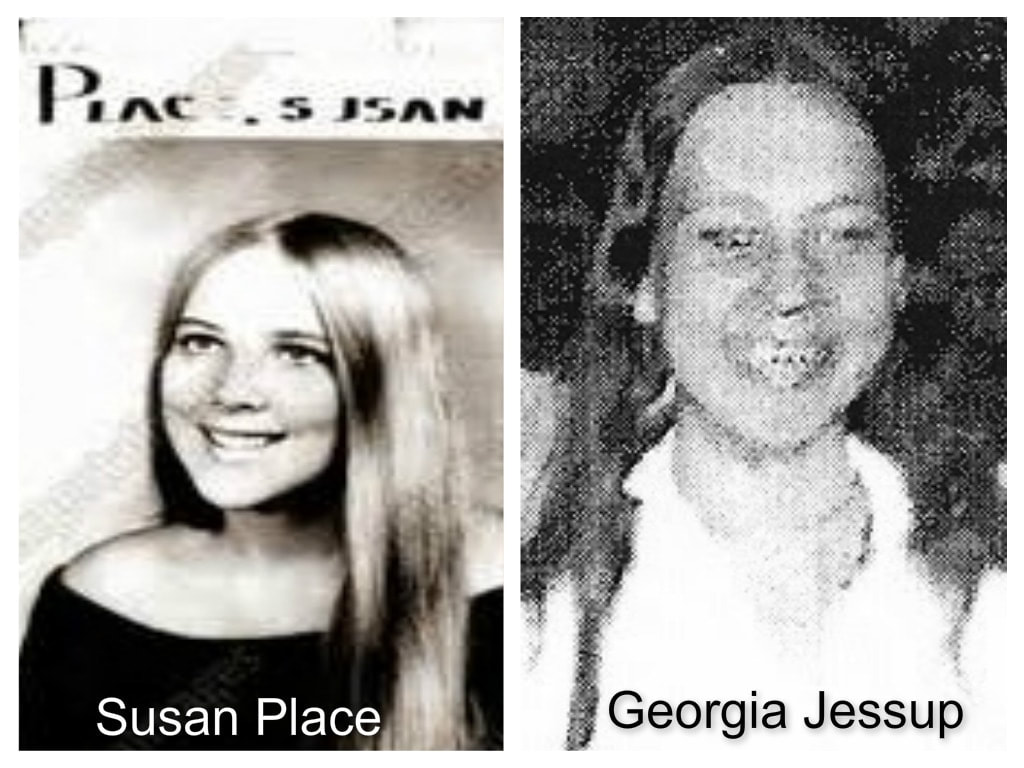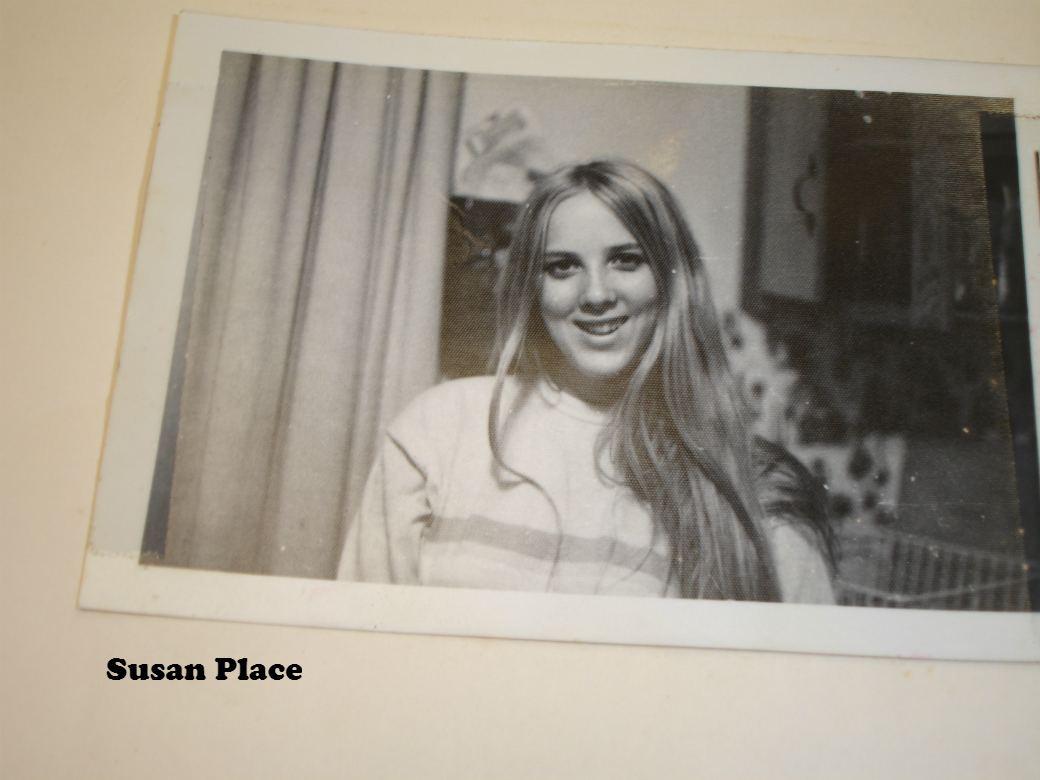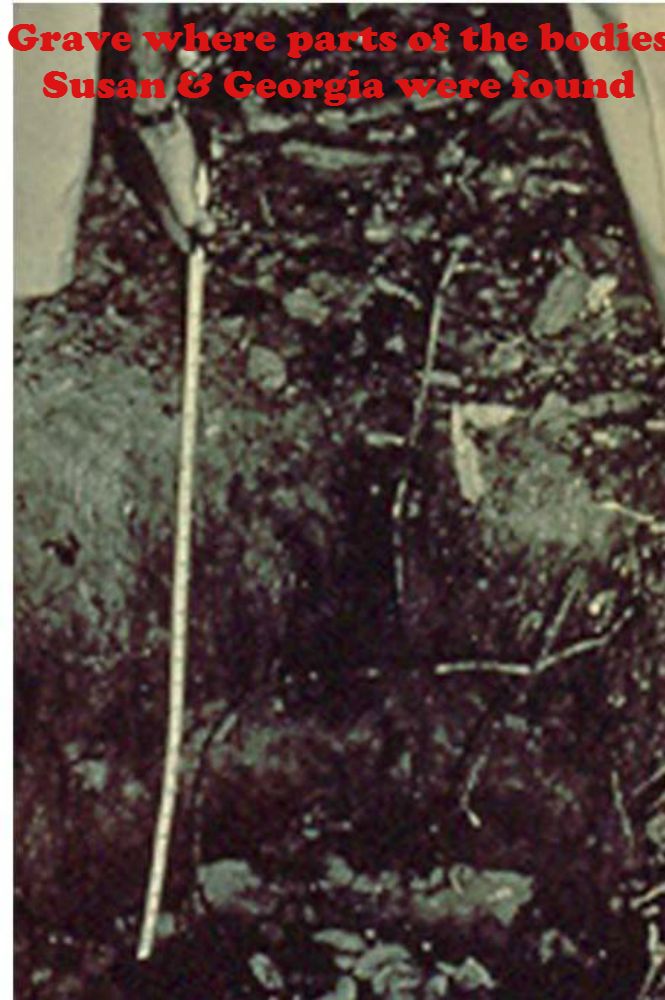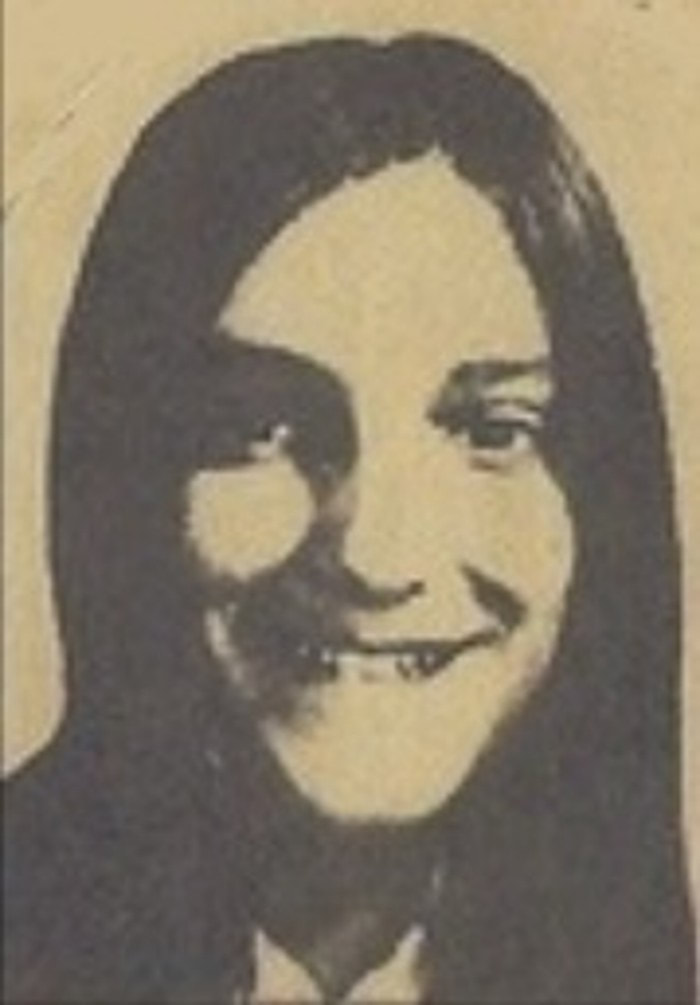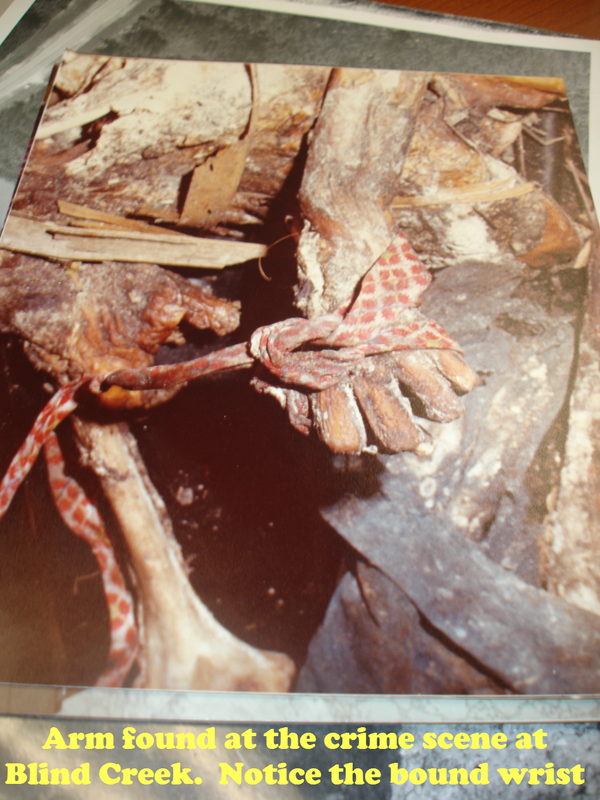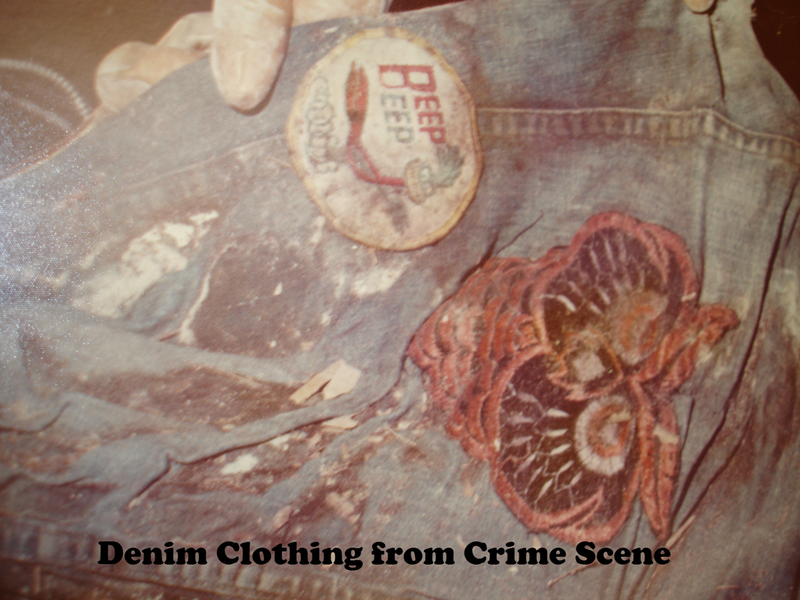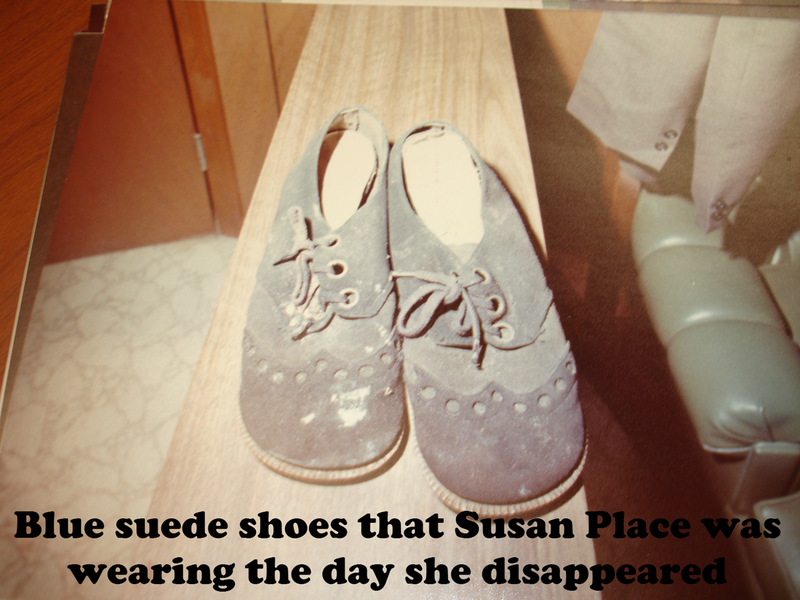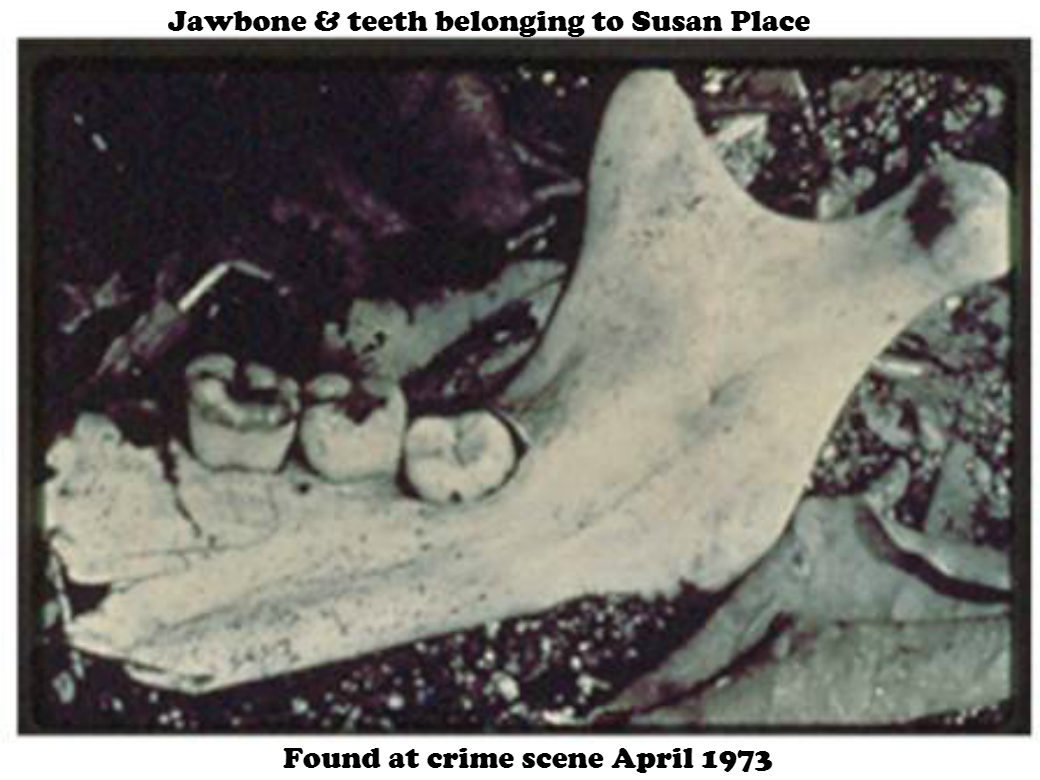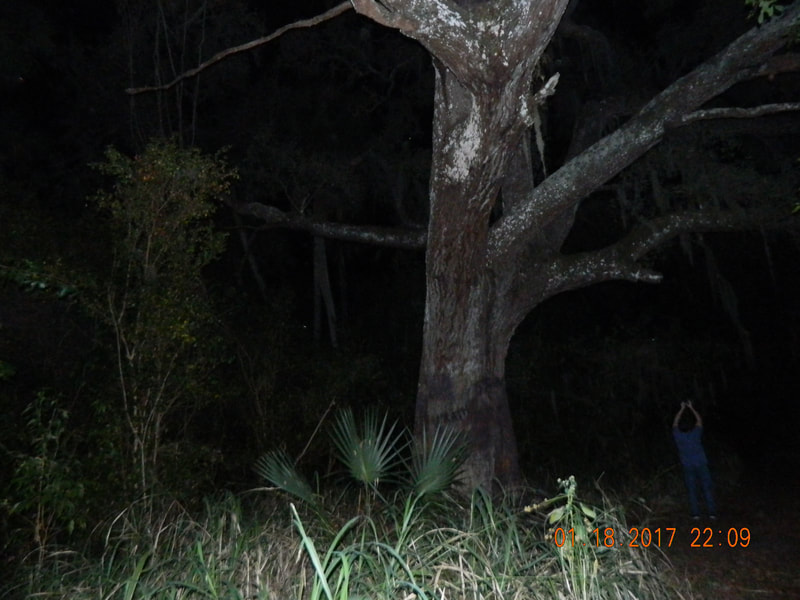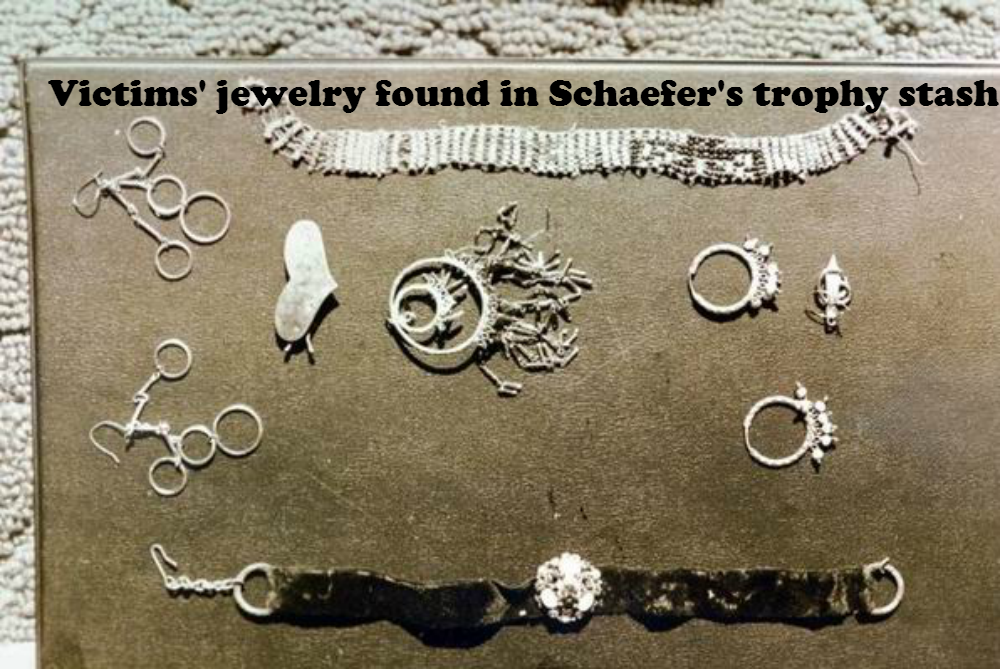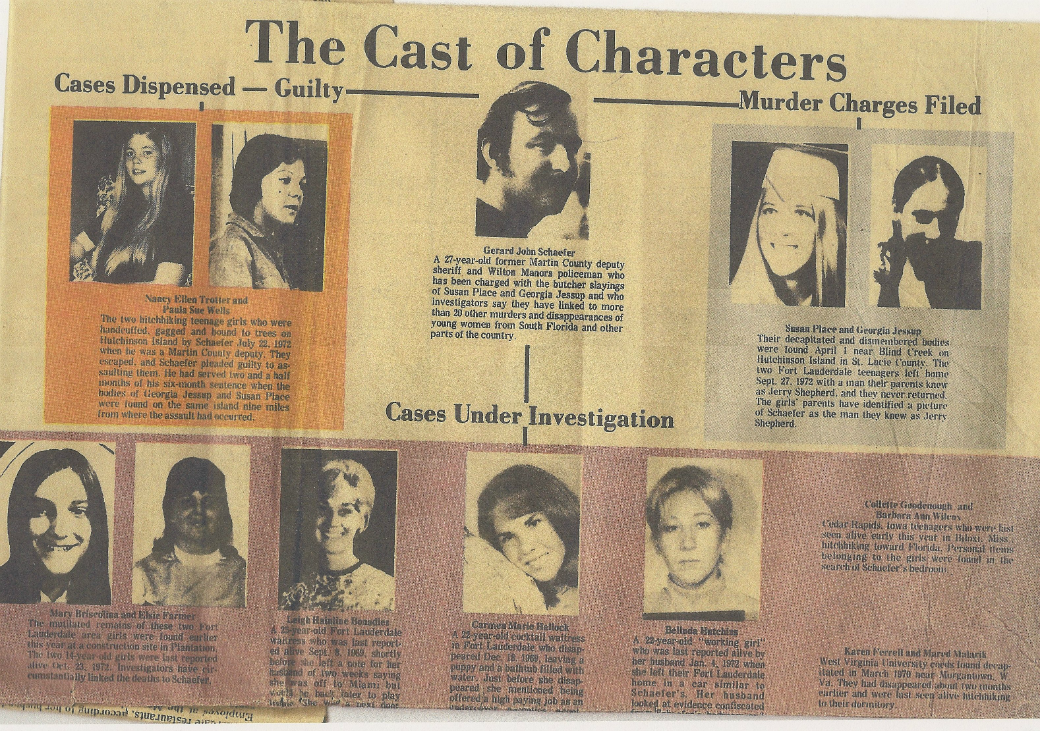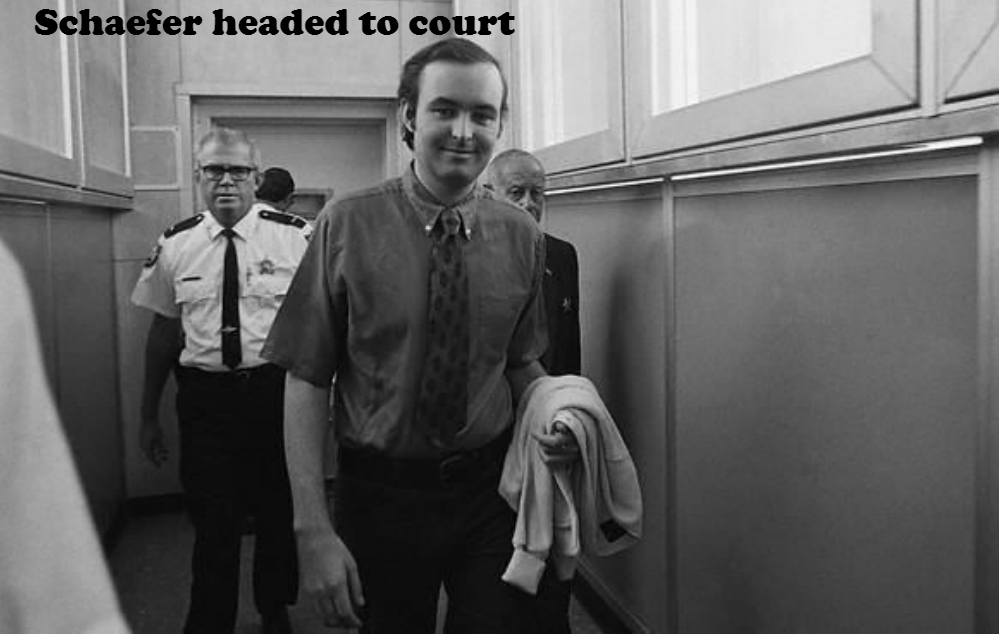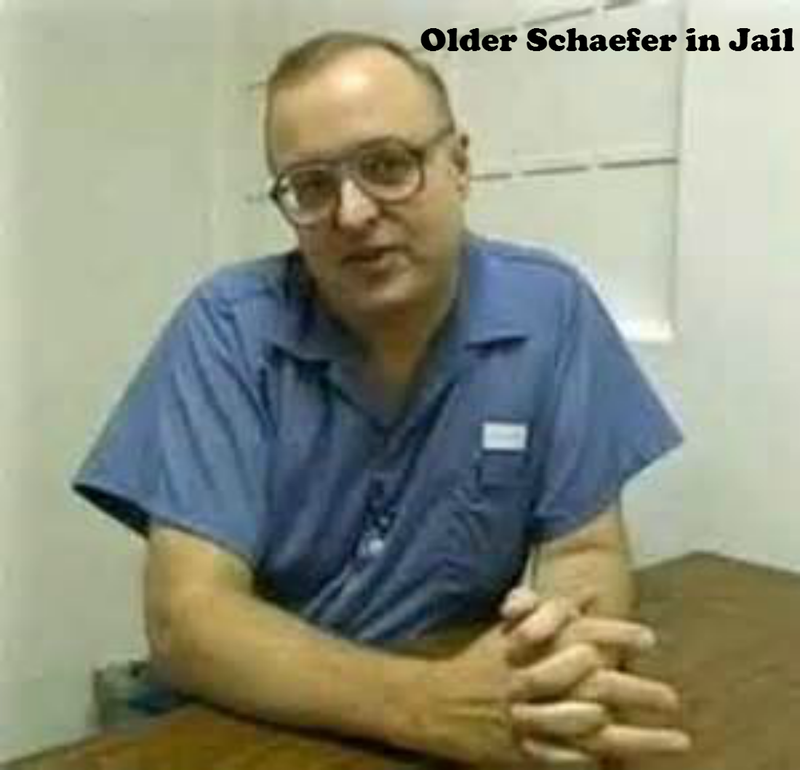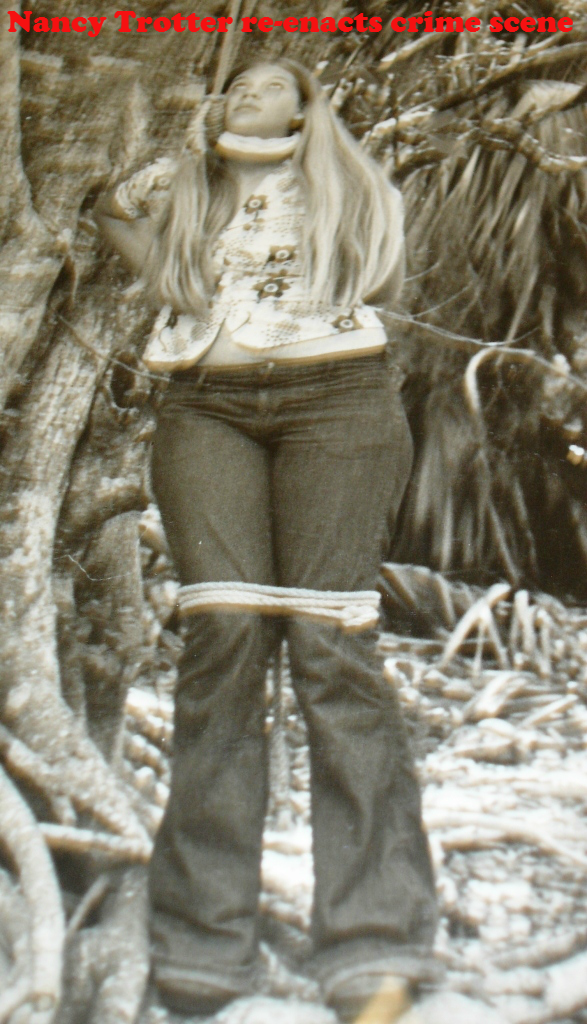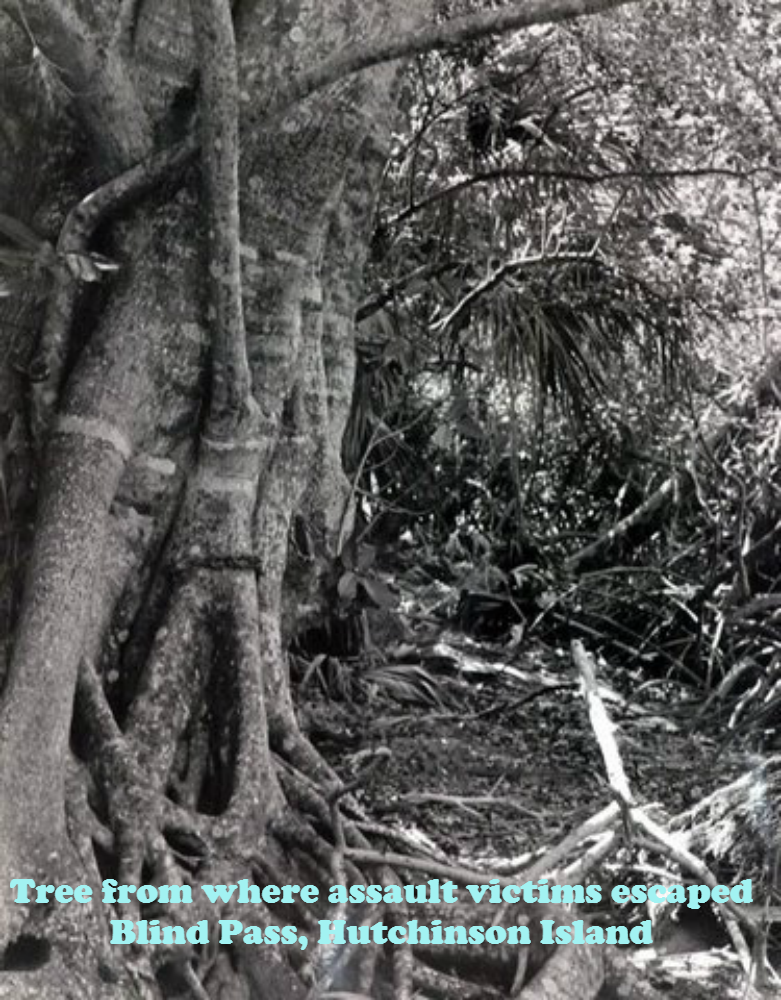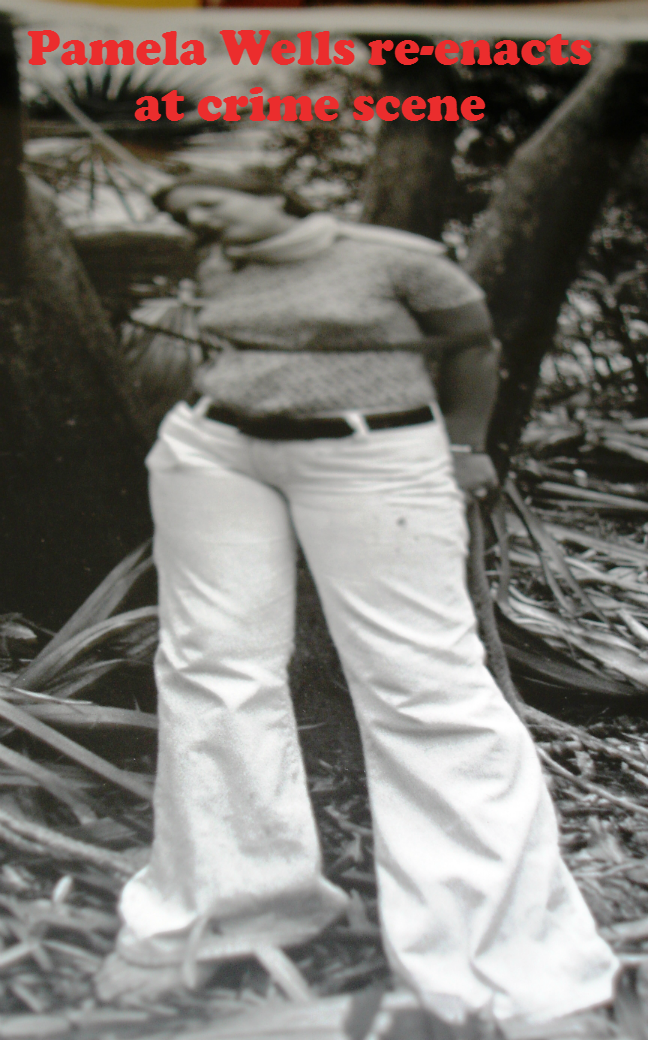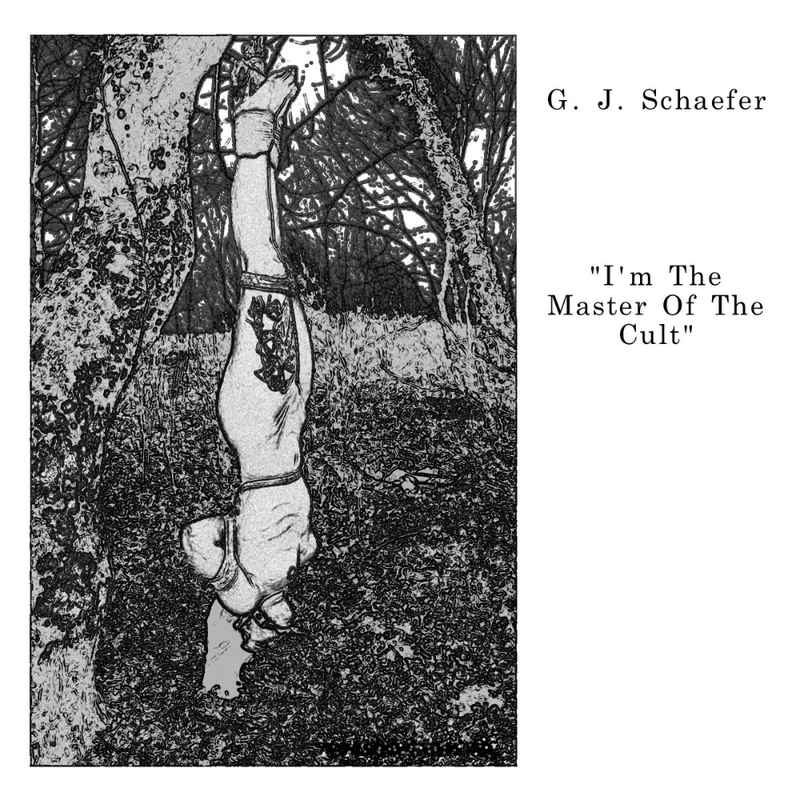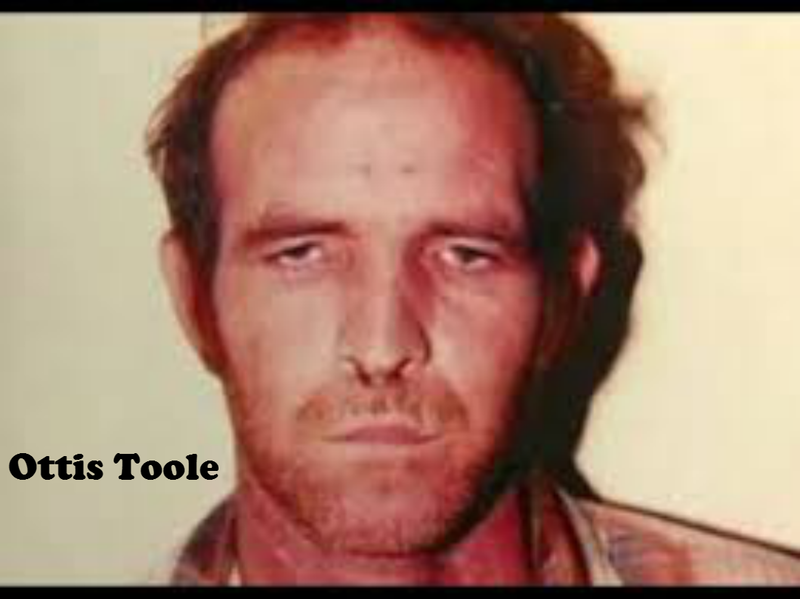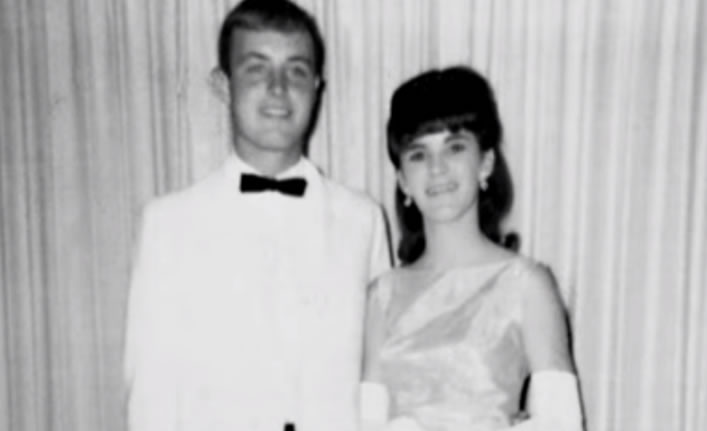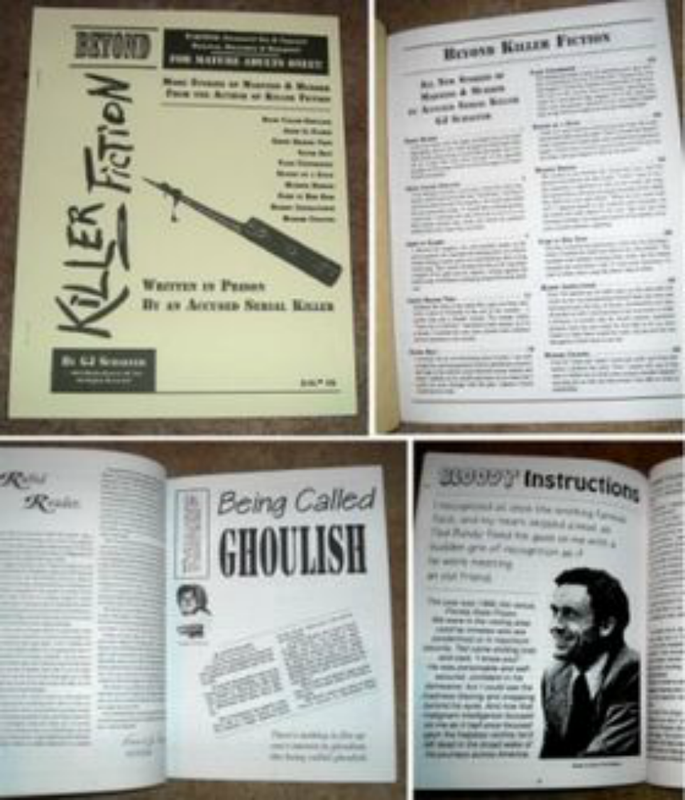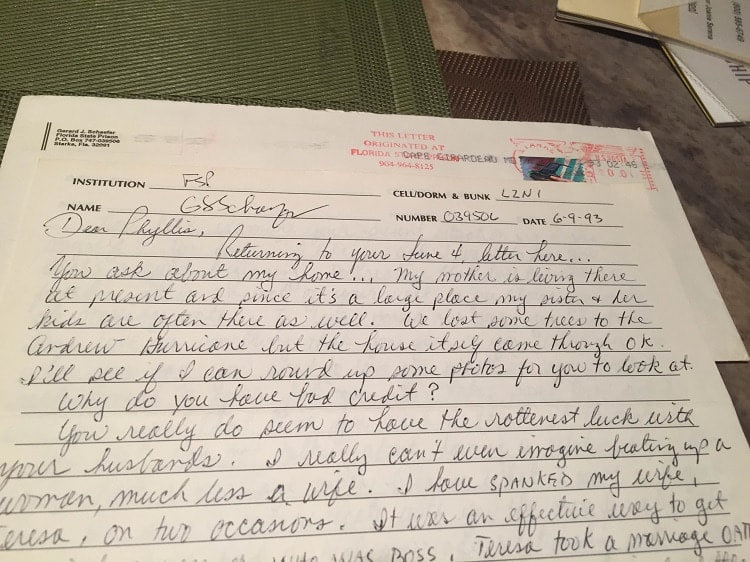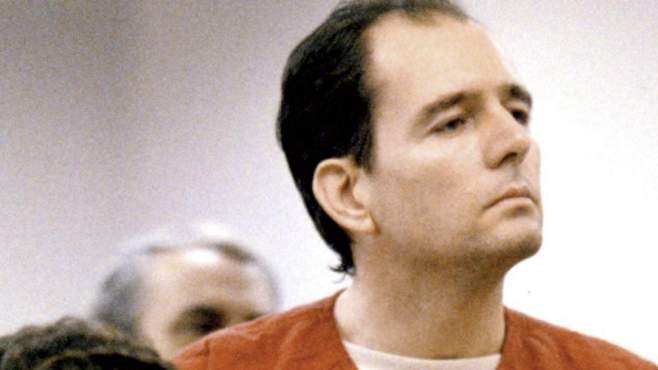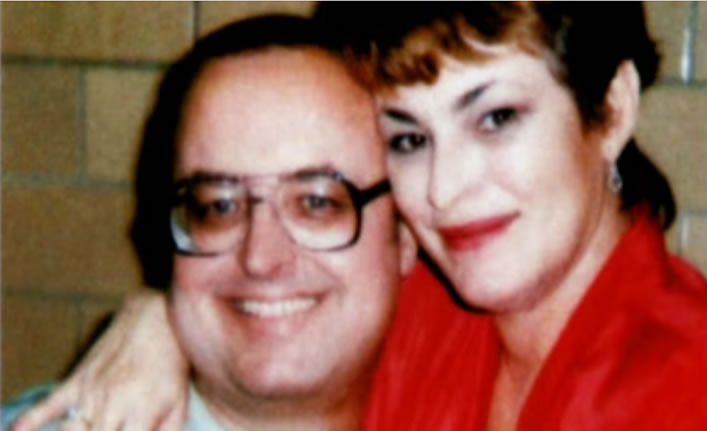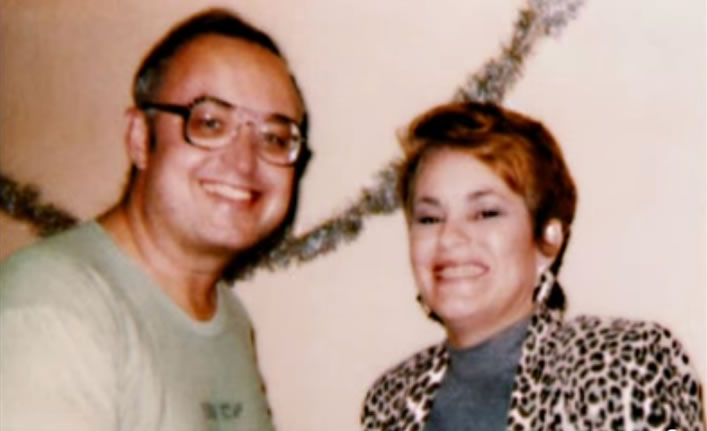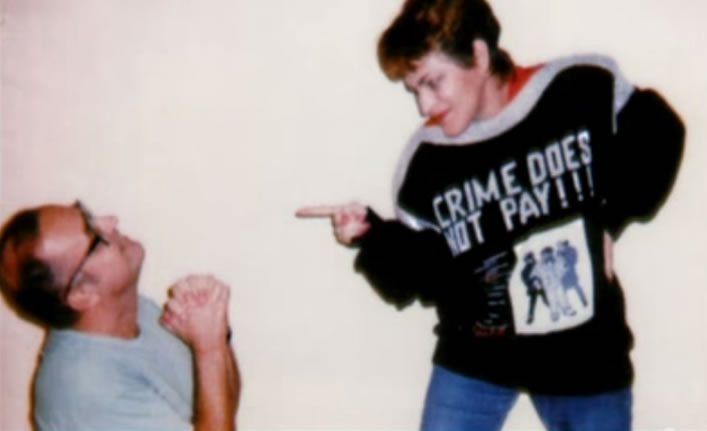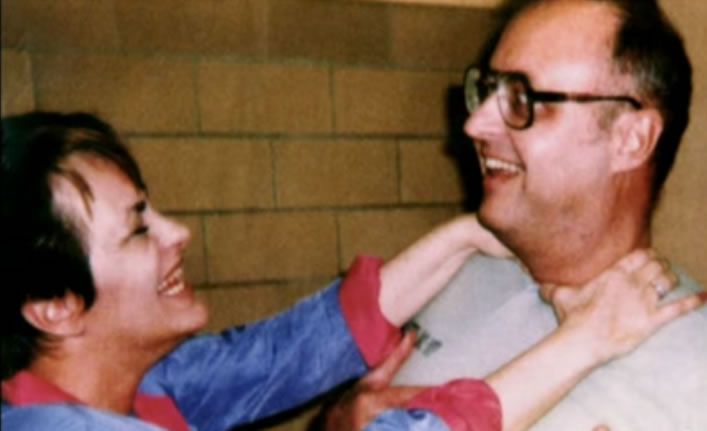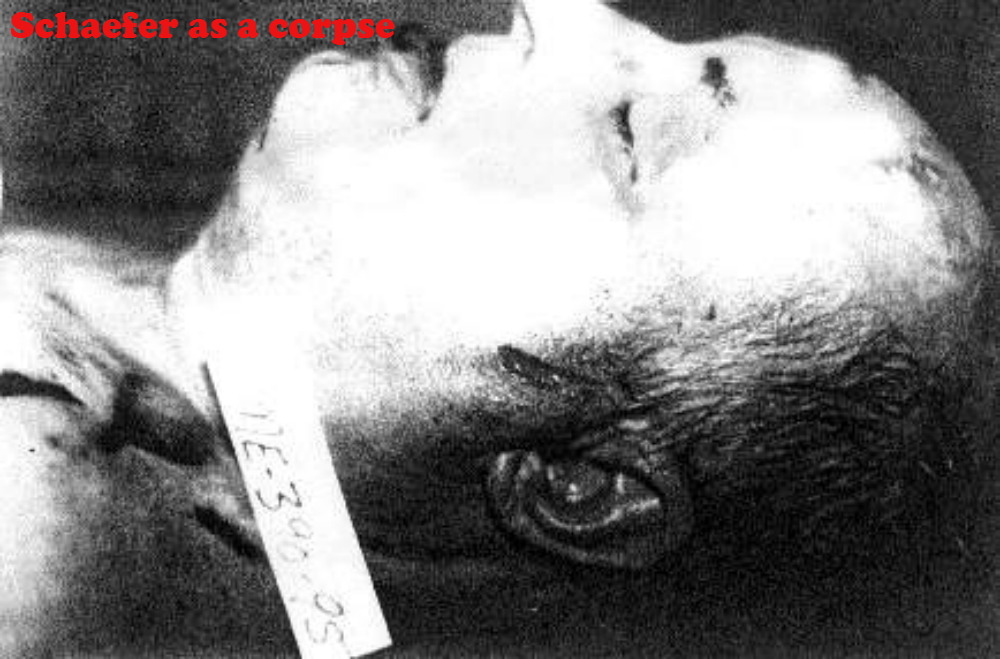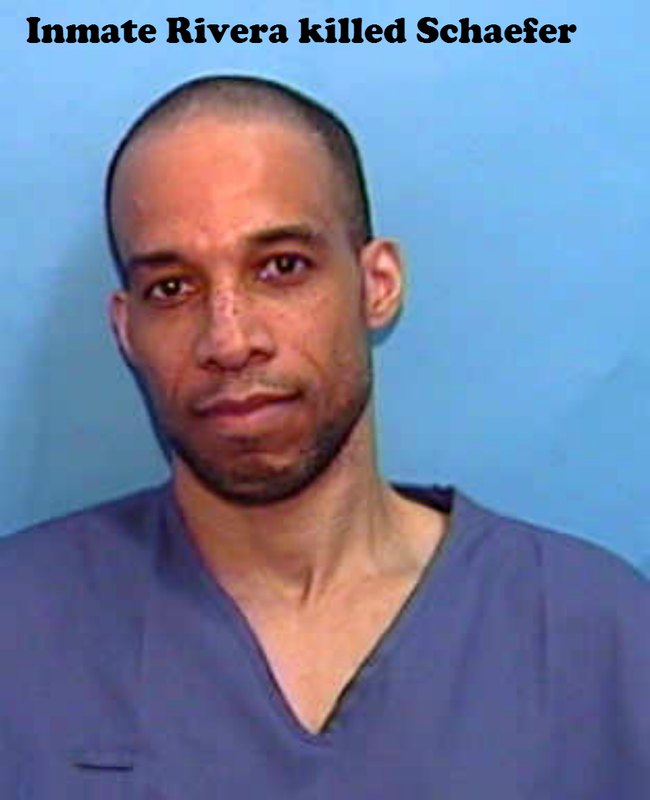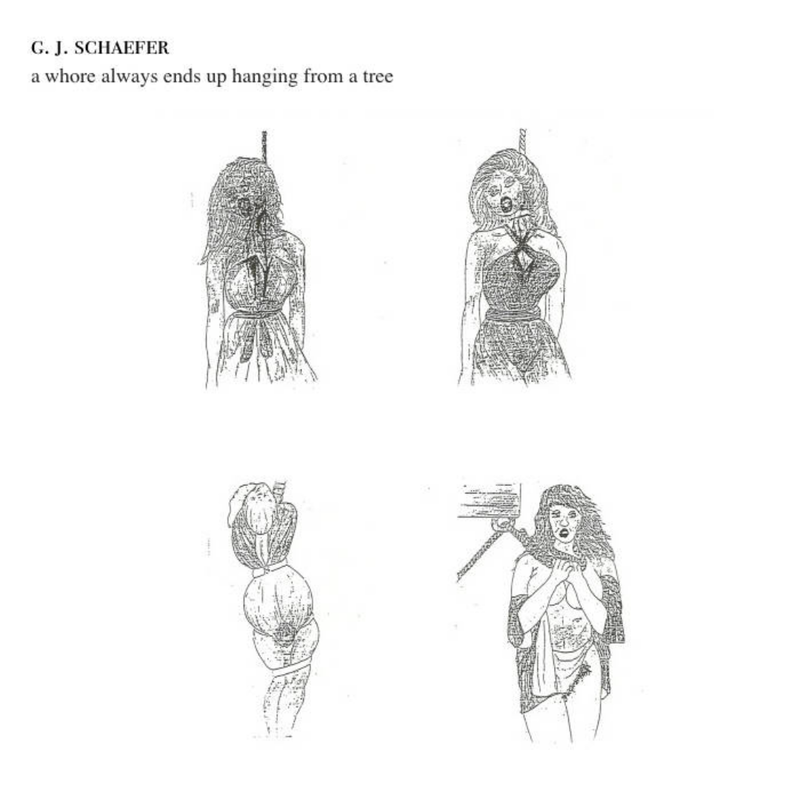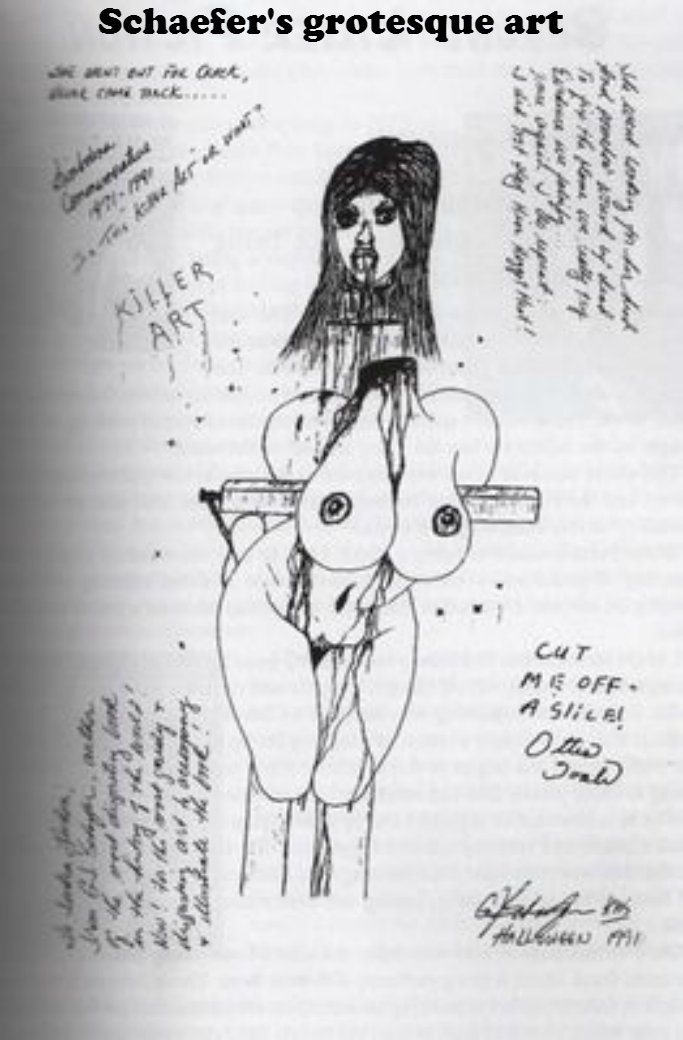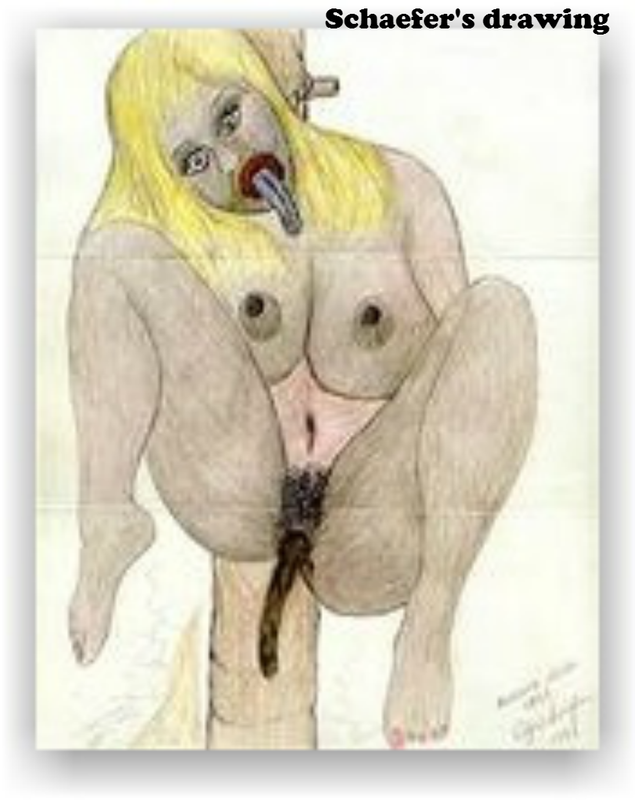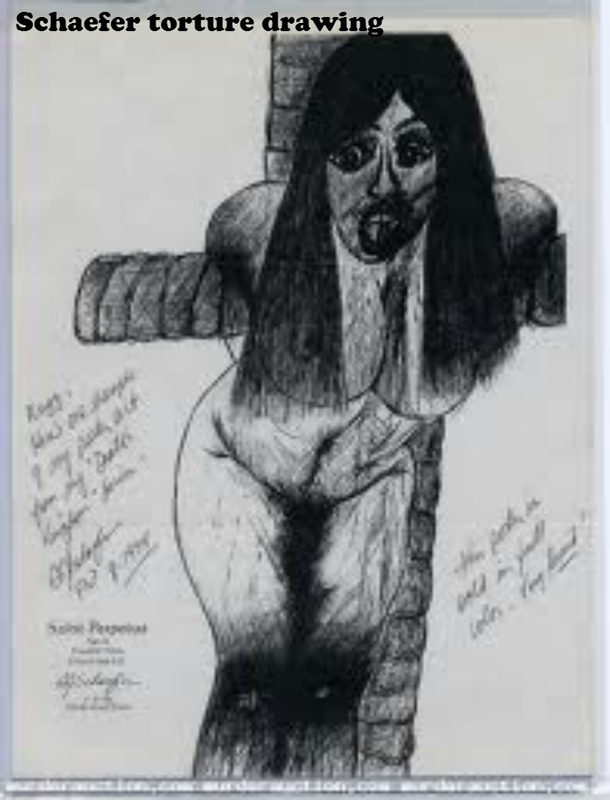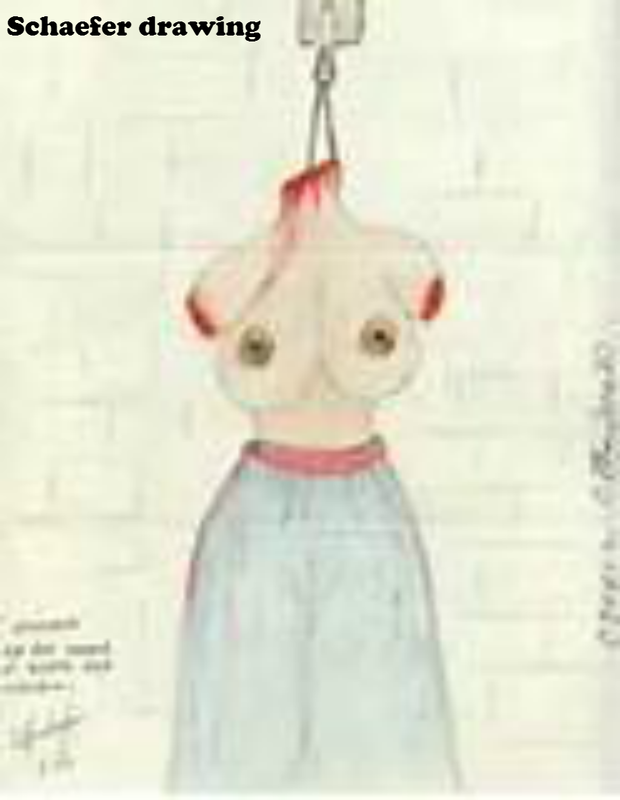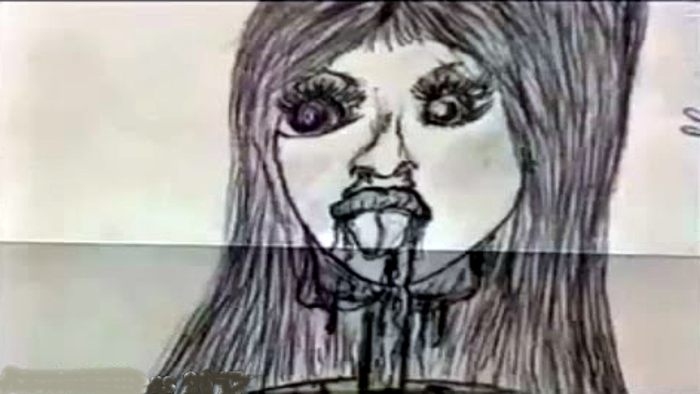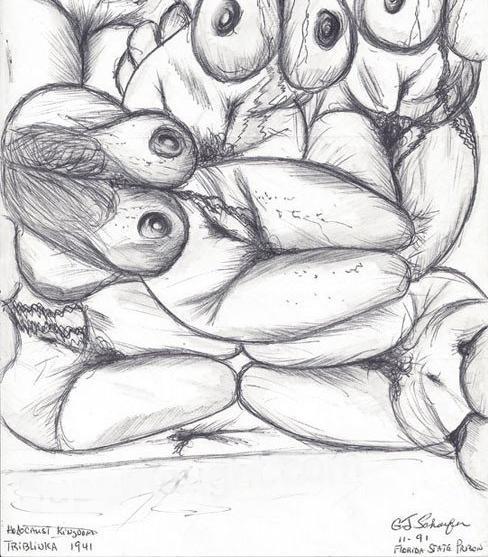The Devil Tree
The Killing Ground of
Serial Killer Gerard Schaefer
 Devil Tree c.2016
Devil Tree c.2016
What else can you call a tree that's been tainted by the blood of innocent human beings? A 150 years old oak situated in a residential park in Port St. Lucie, Florida, was a silent witness to the atrocities committed by serial killer Gerard Schaefer against two victims who he tortured and then buried under the tree. More than forty years have passed since the skeletal remains of two teenage girls were recovered, or so the story goes. However just as the years passed so did the tales of paranormal events and sightings of hooded figures increase. How much of these tales are urban myth, and how much is the truth? Do satanist claim this area as a place to invoke dark spirits?
Who was the devil that created the Devil Tree? That Schaefer was a troubled soul is an understatement. He started to experiment with bondage and sadomasochism around age 12. He told psychiatrist that he tied himself up to a tree and get sexually excited and then hurt himself. He would also masturbate and fantasize about hurting other people, especially women. He also started wearing women’s panties. His earliest childhood memories were that he wanted to be a girl, because his sister was favored by his alcoholic, verbally abusive father.
At 14 years old, Schaefer had a girlfriend named Cindy. Their relationship of three years was sordid and bizarre. He would make her take part in role-play fantasies in which he tore off her clothes and “raped” her. In 1963, she broke up with him.
After 1966, he tried to join the priesthood, and was turned away by St. John’s Seminary because they claimed he didn’t have enough faith. He was so enraged he just quit the Catholic religion. He was dropped twice from student teaching programs because he was trying to impose his own moral and political values on his students.
Who was the devil that created the Devil Tree? That Schaefer was a troubled soul is an understatement. He started to experiment with bondage and sadomasochism around age 12. He told psychiatrist that he tied himself up to a tree and get sexually excited and then hurt himself. He would also masturbate and fantasize about hurting other people, especially women. He also started wearing women’s panties. His earliest childhood memories were that he wanted to be a girl, because his sister was favored by his alcoholic, verbally abusive father.
At 14 years old, Schaefer had a girlfriend named Cindy. Their relationship of three years was sordid and bizarre. He would make her take part in role-play fantasies in which he tore off her clothes and “raped” her. In 1963, she broke up with him.
After 1966, he tried to join the priesthood, and was turned away by St. John’s Seminary because they claimed he didn’t have enough faith. He was so enraged he just quit the Catholic religion. He was dropped twice from student teaching programs because he was trying to impose his own moral and political values on his students.
On October 2, 1966, Nancy Leichner age 20, and Pamela Nater age 21 had joined their boyfriends at Alexander Springs Park in the Ocala National Forest. While their boyfriends were diving, the girls decided to walk the park’s nature trail. Later, a witness reported to have seen the two girls walking along the trail with an unidentified male following close behind them. No one has seen them since. Investigators determined that the girls were most likely taken from the park and killed. Their boyfriends where suspects in the beginning, but no evidence pointed to them being responsible for the disappearance of either girl.
In 2007, Lake County investigator announced they had cracked the case of Leichner and Nater, which was unsolved for over 40 years. In 2004, the cold case unit decided to revisit the case. A review of Gerard Schaefer's criminal history made him a possible suspect, which he was not when the women disappeared. While an inmate at Avon Park Correctional Facility, Schaefer admitted to Charles Sizelove a fellow prisoner that he had killed both of them.
Sizelove was a former cop convicted of fraud, and he kept notes of the conversation. He gave them to correctional officers at the facility. This was not the first time Sizelove helped law enforcement and had a reputation as a "jail-house snitch". These notes resurfaced during the case re-examination, as well as interviews with witnesses. Based on materials and strong circumstantial evidence everything pointed to Schaefer as the one who killed them. By 2007, Leichner's father and both of Nater's parents had died. The remains of these victims have never been found.
On September 8, 1969, Leigh Hainline Bonadies, Schaefer’s former neighbor, had disappeared. She married Charles Bonadies only a month before, and their relationship was often times rocky. When Leigh announced that her childhood neighbor and sometime tennis partner had offered her a $20,000 salary to join the CIA, Charles laughed and thought it was ridiculous. Then on September 8, he came home to find a note from Leigh, saying she had gone to Miami to speak with Schaefer about the job. When Leigh’s brother called Schaefer to ask him if he had seen Leigh, he was told a bizarre story. Schaefer described how Leigh had called him and asked for a ride to the airport because she was flying to Cincinnati, Ohio. Leigh wasn’t sure of the departure time, so she would call him back with the information. He never heard from her. Leigh’s car was found parked in a Fort Lauderdale parking lot.
Three months after Leigh Bonadies disappeared, Schaefer was employed as an intern/student teacher at Plantation High School. A beautiful 22-year-old cocktail waitress, Carmen "Candy" Hallock, called her sister-in-law on December 18, 1969, to tell her she had an appointment with a male teacher from a local junior college that evening. The unidentified teacher claimed to also have done undercover work for the government, and could possibly have an employment opportunity for Carmen, which would include international travel and a high salary. Carmen told her sister-in-law that she purchased a pair of black leather high heel shoes, and planned to wear a black cocktail dress with those heels to the meeting.
Not hearing from Carmen since their telephone conversation, her sister-in-law went to check Carmen’s apartment on Christmas Day. Her car keys, driver’s license, and vehicle registration were missing. Also absent were the black cocktail dress and black high heel shoes. Her car was later found abandoned in a parking lot, but Carmen was nowhere to be found. Her skeletal remains were finally discovered almost 10 years later in January 1978 in Boca Raton, Florida, in the subdivision of Boca Del Mar, which was under construction at the time .
In 2007, Lake County investigator announced they had cracked the case of Leichner and Nater, which was unsolved for over 40 years. In 2004, the cold case unit decided to revisit the case. A review of Gerard Schaefer's criminal history made him a possible suspect, which he was not when the women disappeared. While an inmate at Avon Park Correctional Facility, Schaefer admitted to Charles Sizelove a fellow prisoner that he had killed both of them.
Sizelove was a former cop convicted of fraud, and he kept notes of the conversation. He gave them to correctional officers at the facility. This was not the first time Sizelove helped law enforcement and had a reputation as a "jail-house snitch". These notes resurfaced during the case re-examination, as well as interviews with witnesses. Based on materials and strong circumstantial evidence everything pointed to Schaefer as the one who killed them. By 2007, Leichner's father and both of Nater's parents had died. The remains of these victims have never been found.
On September 8, 1969, Leigh Hainline Bonadies, Schaefer’s former neighbor, had disappeared. She married Charles Bonadies only a month before, and their relationship was often times rocky. When Leigh announced that her childhood neighbor and sometime tennis partner had offered her a $20,000 salary to join the CIA, Charles laughed and thought it was ridiculous. Then on September 8, he came home to find a note from Leigh, saying she had gone to Miami to speak with Schaefer about the job. When Leigh’s brother called Schaefer to ask him if he had seen Leigh, he was told a bizarre story. Schaefer described how Leigh had called him and asked for a ride to the airport because she was flying to Cincinnati, Ohio. Leigh wasn’t sure of the departure time, so she would call him back with the information. He never heard from her. Leigh’s car was found parked in a Fort Lauderdale parking lot.
Three months after Leigh Bonadies disappeared, Schaefer was employed as an intern/student teacher at Plantation High School. A beautiful 22-year-old cocktail waitress, Carmen "Candy" Hallock, called her sister-in-law on December 18, 1969, to tell her she had an appointment with a male teacher from a local junior college that evening. The unidentified teacher claimed to also have done undercover work for the government, and could possibly have an employment opportunity for Carmen, which would include international travel and a high salary. Carmen told her sister-in-law that she purchased a pair of black leather high heel shoes, and planned to wear a black cocktail dress with those heels to the meeting.
Not hearing from Carmen since their telephone conversation, her sister-in-law went to check Carmen’s apartment on Christmas Day. Her car keys, driver’s license, and vehicle registration were missing. Also absent were the black cocktail dress and black high heel shoes. Her car was later found abandoned in a parking lot, but Carmen was nowhere to be found. Her skeletal remains were finally discovered almost 10 years later in January 1978 in Boca Raton, Florida, in the subdivision of Boca Del Mar, which was under construction at the time .
As can be deducted, Schaefer’s M.O. included promising the moon to vulnerable and gullible women, but only weeks from the disappearance of Carmen Hollock, the most innocent of victims were targeted.
On December 29, 1969, Peggy Rahn, 9, and Wendy Stevenson, 8, vanished from Pompano Beach, Florida. A family friend had decided to take Peggy to the beach that day, while Wendy came with her uncle. The girls attended Palmview Elementary School but didn’t know each other very well before that day. It was just a chance meeting at the beach for the two little girls. Around 1:00 PM, the girls decided to walk to the parking lot to buy an ice cream. The last person to see Peggy and Wendy was a store clerk who identified the two girls from photographs, saying he had seen a strange man buying ice cream cones for the girls. The stranger was described as being a white man, 6 ft. tall and weighing about 200 lbs., in his twenties, with sandy colored hair, gray eyes and a humped nose. Although Wendy was known to be a good swimmer, authorities initially believed the girls drowned, but nobody saw either of them in any distress in the water that day. Their bodies have never been found. Peggy was last seen wearing a pink baby doll bikini and Wendy had on a blue and white checkered bikini.
In 1968, Schaefer had married Martha Fogg, but it didn't work out. Martha filed for divorce in May 1970, claiming "extreme cruelty."
Schaefer led a double life. He had perfected his act of acting like a normal human being, while in truth he was torturing and killing women and children.
After being rejected as a priest and a teacher, he decided he would be a policeman. By then Schaefer already had a body count mounting up, and wearing a badge only provided more accessibility to potential victims. Several departments rejected him until he was hired by the Wilton Manors Police Dept.
On January 5, 1972, Belinda Hutchens a 22 year old cocktail waitress who had a history of arrests for prostitution got into a car with a stranger who drove a blue Datsun. Her husband who was a drug addict, later told police that Belinda always flaunted her extramarital affairs and led her own lifestyle. Her husband and 2-year old daughter never saw her again. Belinda was known to have dated Schaefer while he attended the police academy.
Less than two months passed when Debora Sue Lowe,13, disappeared while walking one mile to Rickards Middle School on February 29, 1972. She never arrived and has not been seen or heard from since. Her school books were found in a trash can a block from her home. At first it was believed by the Pompano Beach Police Department that Debora ran away from home to return back to Palestine, West Virginia, from which her family had just moved. But her family refused to believe she had simply run away, without any prior history of such behavior. Gerard Schaefer worked with Debora’s father and visited her family’s home numerous times, as well as the family visiting Schaefer’s home for cookouts on a few occasions. Debora or her remains have never been found and she is still considered a missing person, but her family believes she is a victim of Schaefer’s.
On December 29, 1969, Peggy Rahn, 9, and Wendy Stevenson, 8, vanished from Pompano Beach, Florida. A family friend had decided to take Peggy to the beach that day, while Wendy came with her uncle. The girls attended Palmview Elementary School but didn’t know each other very well before that day. It was just a chance meeting at the beach for the two little girls. Around 1:00 PM, the girls decided to walk to the parking lot to buy an ice cream. The last person to see Peggy and Wendy was a store clerk who identified the two girls from photographs, saying he had seen a strange man buying ice cream cones for the girls. The stranger was described as being a white man, 6 ft. tall and weighing about 200 lbs., in his twenties, with sandy colored hair, gray eyes and a humped nose. Although Wendy was known to be a good swimmer, authorities initially believed the girls drowned, but nobody saw either of them in any distress in the water that day. Their bodies have never been found. Peggy was last seen wearing a pink baby doll bikini and Wendy had on a blue and white checkered bikini.
In 1968, Schaefer had married Martha Fogg, but it didn't work out. Martha filed for divorce in May 1970, claiming "extreme cruelty."
Schaefer led a double life. He had perfected his act of acting like a normal human being, while in truth he was torturing and killing women and children.
After being rejected as a priest and a teacher, he decided he would be a policeman. By then Schaefer already had a body count mounting up, and wearing a badge only provided more accessibility to potential victims. Several departments rejected him until he was hired by the Wilton Manors Police Dept.
On January 5, 1972, Belinda Hutchens a 22 year old cocktail waitress who had a history of arrests for prostitution got into a car with a stranger who drove a blue Datsun. Her husband who was a drug addict, later told police that Belinda always flaunted her extramarital affairs and led her own lifestyle. Her husband and 2-year old daughter never saw her again. Belinda was known to have dated Schaefer while he attended the police academy.
Less than two months passed when Debora Sue Lowe,13, disappeared while walking one mile to Rickards Middle School on February 29, 1972. She never arrived and has not been seen or heard from since. Her school books were found in a trash can a block from her home. At first it was believed by the Pompano Beach Police Department that Debora ran away from home to return back to Palestine, West Virginia, from which her family had just moved. But her family refused to believe she had simply run away, without any prior history of such behavior. Gerard Schaefer worked with Debora’s father and visited her family’s home numerous times, as well as the family visiting Schaefer’s home for cookouts on a few occasions. Debora or her remains have never been found and she is still considered a missing person, but her family believes she is a victim of Schaefer’s.
In April 1972, one month after receiving a commendation for a drug bust Schaefer was fired. The reasons given vary. According to the chief it was because he didn’t have an ounce of sense. According to an FBI source, it was due to him running female traffic violator’s through the department’s computer, in order to obtain their personal information, and then calling them for dates.
He didn’t stay unemployed for long and in June of 1972, he was hired by Martin County Sheriff’s Dept. Schaefer moved to Stuart, Florida, and this is when his public life truly started to unravel. On July 21, he picked up 2 hitchhikers, Pamela Wells, 17, and Nancy Trotter, 18. He threatened to arrest them for hitchhiking, which in truth was not an offense. He took them instead to the halfway house where they were living after they agreed to meet him the next day, so that he could give them a ride to the beach. They met as agreed, and Schaefer kidnapped and took them to Hutchinson Island. He threatened them with a gun, and told them he was going to sell them into prostitution as white slaves. He bound both girls, and left them balanced on tree roots with nooses around their necks. If they slipped and fell they would slowly choke to death. Schaefer left them to attend a police call, promising to return shortly. The girls escaped in his absence and reached the highway, where they flagged down a passing police car. They had no problem identifying their assailant, since Schaefer had told them his real name.
After his boss found out what he did, he was fired on the spot, charged with false imprisonment and two counts of aggravated assault. He was released on $15,000 bond. Neither law enforcement nor the courts had any idea of the monster they had on their hands, and allowed him to walk free until he had to report to the jail to fulfill his sentence. This decision sealed the doom of several women.
The most shocking revelations were yet to come. Two other girls were missing from the neighborhood, and they would not be as lucky as Trotter and Wells. On September 27, 1972, while Schaefer was free on bond pending trial, Susan Place, 17. and Georgia Jessup, 16, vanished from Fort Lauderdale. He abducted, tortured and murdered Susan and Georgia, and buried them on Hutchinson Island. This was the same remote wooded area where he took Pamela Wells and Nancy Trotter to a year earlier. Susan's parents said the girls were last seen at their house, leaving with an older man named "Gerry Shepherd". They planned a trip to a nearby beach to "play guitar". The girls never came back, but Lucille Place had noted Schafer’s license number, along with a description of his blue green Datsun.
Elsie Lina Farmer and Mary Alice Briscolina both age 14, disappeared from Pompano Beach, Florida on October 23, 1972. Elsie was reported missing the next day, while Mary’s family waited another week, thinking she had just run away from home. Elsie’s skeletal remains were found on January 17, 1973 at a construction site near Plantation High School. On February 15, about 200 yards away, Mary’s remains were also found. Both girls were identified via dental records. The remains had no evidence of foul play but Briscolina had sustained a broken jawbone. Elsie's parents were listed as Curtis Farmer and Ethel E. Doefler but no address was given for them. She was living with her half-sister Linda Walker at the Pan American Estates trailer park. Elsie was technically a ward of the state, who paid for the funeral.
He didn’t stay unemployed for long and in June of 1972, he was hired by Martin County Sheriff’s Dept. Schaefer moved to Stuart, Florida, and this is when his public life truly started to unravel. On July 21, he picked up 2 hitchhikers, Pamela Wells, 17, and Nancy Trotter, 18. He threatened to arrest them for hitchhiking, which in truth was not an offense. He took them instead to the halfway house where they were living after they agreed to meet him the next day, so that he could give them a ride to the beach. They met as agreed, and Schaefer kidnapped and took them to Hutchinson Island. He threatened them with a gun, and told them he was going to sell them into prostitution as white slaves. He bound both girls, and left them balanced on tree roots with nooses around their necks. If they slipped and fell they would slowly choke to death. Schaefer left them to attend a police call, promising to return shortly. The girls escaped in his absence and reached the highway, where they flagged down a passing police car. They had no problem identifying their assailant, since Schaefer had told them his real name.
After his boss found out what he did, he was fired on the spot, charged with false imprisonment and two counts of aggravated assault. He was released on $15,000 bond. Neither law enforcement nor the courts had any idea of the monster they had on their hands, and allowed him to walk free until he had to report to the jail to fulfill his sentence. This decision sealed the doom of several women.
The most shocking revelations were yet to come. Two other girls were missing from the neighborhood, and they would not be as lucky as Trotter and Wells. On September 27, 1972, while Schaefer was free on bond pending trial, Susan Place, 17. and Georgia Jessup, 16, vanished from Fort Lauderdale. He abducted, tortured and murdered Susan and Georgia, and buried them on Hutchinson Island. This was the same remote wooded area where he took Pamela Wells and Nancy Trotter to a year earlier. Susan's parents said the girls were last seen at their house, leaving with an older man named "Gerry Shepherd". They planned a trip to a nearby beach to "play guitar". The girls never came back, but Lucille Place had noted Schafer’s license number, along with a description of his blue green Datsun.
Elsie Lina Farmer and Mary Alice Briscolina both age 14, disappeared from Pompano Beach, Florida on October 23, 1972. Elsie was reported missing the next day, while Mary’s family waited another week, thinking she had just run away from home. Elsie’s skeletal remains were found on January 17, 1973 at a construction site near Plantation High School. On February 15, about 200 yards away, Mary’s remains were also found. Both girls were identified via dental records. The remains had no evidence of foul play but Briscolina had sustained a broken jawbone. Elsie's parents were listed as Curtis Farmer and Ethel E. Doefler but no address was given for them. She was living with her half-sister Linda Walker at the Pan American Estates trailer park. Elsie was technically a ward of the state, who paid for the funeral.
On November 1972, Schaefer appeared in court for the charges connected to the abduction of Pamela Wells and Nancy Trotter on July 21. He pled guilty to one assault charge and the other counts were dropped. Judge D. C. Smith sentenced him to a year in county jail to be followed by three years probation. Although Schaefer was sentenced for the Trotter-Wells assault in December 1972, he did not actually enter jail until January 15, 1973.
On January 8, 1973, just seven days before Schaefer started serving his sentence, two unlucky hitchhikers from Iowa, Collette Goodenough and Barbara Ann Wilcox both age 19, left Biloxi, Mississippi, thumbing their way to Florida. No one saw or heard from them again.
It was March 1973, while Schaefer was serving his one year sentence, investigators traced the plate number provided by Susan Place’s mother back to him. Schaefer denied any contact with Place and Jessup, but his story began unraveling on April 1, 1973, when skeletal remains were found in a shallow grave near Blind Creek Beach on Hutchinson Island by three men collecting aluminum cans. Four days later, the victims were identified from dental records. Susan Place had been shot in the jaw, detectives remarking that evidence from the crime scene indicated the two girls were "tied to a tree, decapitated and butchered."
On January 8, 1973, just seven days before Schaefer started serving his sentence, two unlucky hitchhikers from Iowa, Collette Goodenough and Barbara Ann Wilcox both age 19, left Biloxi, Mississippi, thumbing their way to Florida. No one saw or heard from them again.
It was March 1973, while Schaefer was serving his one year sentence, investigators traced the plate number provided by Susan Place’s mother back to him. Schaefer denied any contact with Place and Jessup, but his story began unraveling on April 1, 1973, when skeletal remains were found in a shallow grave near Blind Creek Beach on Hutchinson Island by three men collecting aluminum cans. Four days later, the victims were identified from dental records. Susan Place had been shot in the jaw, detectives remarking that evidence from the crime scene indicated the two girls were "tied to a tree, decapitated and butchered."
On April 7, police searched the home of Schaefer’s mother Doris, and his then wife Teresa Dean Schaefer, where Schaefer had personal items stored in a spare bedroom. Evidence recovered in the search included a stash of women's jewelry, 100 plus pages of writing and sketches depicting mutilation murders of young women, newspaper clippings and other items. Belongings of nine victims were found. There were other trophies that were not linked to a specific victim, which indicated there were bodies either undiscovered, or not connected to him as a possible suspect.
A driver’s license, passport, diary and book of poetry belonging to vanished hitchhikers Collette Goodenough and Barbara Wilcox were found in the steam trunk where Schaefer kept his trophies. Then in January 1977, the skeletal remains of both girls were found in a wooded area at Oak Hammock Park in Port Saint Lucie, Florida, the site of the notorious Devil Tree. At that time no cause of death could be determined, thus no charges were filed
Other items found was an address book belonging to Belinda Hutchens and a purse belonging to Susan Place.
With the amount of items found in the search of Schaefer’s spare bedroom, the list of suspected victims had grown, but Schaefer faced charges in only two murders. He was indicted on May 18, 1973, for the slayings of Susan Place and Georgia Jessup and held without bond pending trial. He was convicted on two counts of first-degree murder in October 1973, drawing concurrent terms of life imprisonment.
A driver’s license, passport, diary and book of poetry belonging to vanished hitchhikers Collette Goodenough and Barbara Wilcox were found in the steam trunk where Schaefer kept his trophies. Then in January 1977, the skeletal remains of both girls were found in a wooded area at Oak Hammock Park in Port Saint Lucie, Florida, the site of the notorious Devil Tree. At that time no cause of death could be determined, thus no charges were filed
Other items found was an address book belonging to Belinda Hutchens and a purse belonging to Susan Place.
With the amount of items found in the search of Schaefer’s spare bedroom, the list of suspected victims had grown, but Schaefer faced charges in only two murders. He was indicted on May 18, 1973, for the slayings of Susan Place and Georgia Jessup and held without bond pending trial. He was convicted on two counts of first-degree murder in October 1973, drawing concurrent terms of life imprisonment.
His wife, Teresa Schaefer made her one and only prison visit on November 17, 1973, to serve Gerard with divorce papers. She later married Elton Schwarz the public defender who represented Schaefer.
Among the news clips found in the trunk there was one which referred to the February 1969, disappearance of waitress Carmen Hallock. A shamrock pin which belonged to her was found in Schafer’s hoard, along with a gold-filled tooth identified by Hallock’s dentist, but once again no charges were filed.
The second missing woman, Leigh Bonadies, had been a neighbor of Schaefer's when she disappeared in September, 1969. He complained of her "taunting" him by undressing with her curtains open. Three pieces of her jewelry was found among his belongings as well as newspaper clippings about her disappearance, but no charges were filed when her skeletal remains were finally recovered in 1978.
More jewelry linked Schaefer to the disappearance of 14 year old Mary Briscolina, who vanished from Broward County with 13 year old Elsie Farmer in October 1972. Their skeletons were found in early 1973, but once again no cause of death could be determined, and no charges were filed. The girls' teeth had been pulled and scattered around their grave sites, a precaution investigators said Schaefer took because he knew it would make identifying the bodies more difficult.
A former investigator with the Martin County State Attorney's office, who worked on the Oakland Park case, said ''Schaefer never admitted to killing anyone to me, but the stuff he put in his writings, the details of what we found at the crime scene were in his stories. Schaefer's writings talked about finding a spot to bury the women and having them stand on an orange crate while he bound them. He strangled them, raped them, buried them and then dug them up again to rape them again". Schaefer maintained the writings were fiction.
Among the news clips found in the trunk there was one which referred to the February 1969, disappearance of waitress Carmen Hallock. A shamrock pin which belonged to her was found in Schafer’s hoard, along with a gold-filled tooth identified by Hallock’s dentist, but once again no charges were filed.
The second missing woman, Leigh Bonadies, had been a neighbor of Schaefer's when she disappeared in September, 1969. He complained of her "taunting" him by undressing with her curtains open. Three pieces of her jewelry was found among his belongings as well as newspaper clippings about her disappearance, but no charges were filed when her skeletal remains were finally recovered in 1978.
More jewelry linked Schaefer to the disappearance of 14 year old Mary Briscolina, who vanished from Broward County with 13 year old Elsie Farmer in October 1972. Their skeletons were found in early 1973, but once again no cause of death could be determined, and no charges were filed. The girls' teeth had been pulled and scattered around their grave sites, a precaution investigators said Schaefer took because he knew it would make identifying the bodies more difficult.
A former investigator with the Martin County State Attorney's office, who worked on the Oakland Park case, said ''Schaefer never admitted to killing anyone to me, but the stuff he put in his writings, the details of what we found at the crime scene were in his stories. Schaefer's writings talked about finding a spot to bury the women and having them stand on an orange crate while he bound them. He strangled them, raped them, buried them and then dug them up again to rape them again". Schaefer maintained the writings were fiction.
Schaefer found other ways to amuse himself while he was serving his life sentences. In 1979, he declared himself married to a Filipina picture bride named Elen. The young woman made an appearance in July 1980, and moved in with Schaefer’s father. A marriage license materialized, sans ceremony, and was accepted by authorities at Avon Park's minimum-security prison. Several contact visits were permitted. Five years later, with her green card in hand Mrs. Schaefer secured a divorce and dropped him like the proverbial hot potato.
A few weeks later, in September 1985, Schaefer was accused of plotting to escape from Avon Park and murder a hit list of victims including his ex-wife Theresa, Elton Schwarz, Robert Stone and Judge Trowbridge. State police confirmed the plot existed, and Schaefer was packed off to a maximum security at Starke, home of Florida’s death row inmates.
Despite being closely watched, Schaefer still managed to run a mail-fraud operation from his cell. He collaborated with cohorts outside to post ads in sex magazines, where they solicited money for various kinky tricks. To that end, Schaefer adopted different pseudonyms, always female. He became Mistress Felice, a dominatrix; prostitute Jessica Zurriaga; stern Matron Miller; a husband-killer on death row; and so on. Some of his slaves paid cash for the privilege of washing Mistress Felice’s soiled panties (delivered by mail, for a price of course). Schaefer also enjoyed writing to inmates of other prisons, posing as the great love of their lives, laughing behind their backs.
When not scamming freaks, Schaefer worked as a jailhouse lawyer with a twist. While writing briefs for fellow cons, he milked his clients for information on their cases, then sold them out to authorities. One such inmate, awaiting trial for murder, told Schaefer where his victim's body could be found. Schaefer relayed the directions to police, landing his client on death row. It was a deadly game, perhaps an extension of his childhood death wish, and he played it recklessly, as if he were invulnerable.
In 1986, collaborating with police from North Miami, Schaefer adopted the guise of Dee Dee Kelly, a 14-year-old prostitute who offered nude photos to pedophiles. Responses to his ads were collected by U.S. Postal inspectors, but none of Schaefer’s correspondents were prosecuted. Instead, authorities discovered he was working with another inmate, Mervyn Cross, to run a child pornography network from prison. Cross paid Schaefer’s father a monthly stipend for use of his telephone line, to communicate with Filipino colleagues. Prosecutors convicted Cross, adding time to his sentence at Starke, but no charges were filed against the Schaefers.
Even as the Dee Dee sting collapsed, Schaefer had his first encounter with condemned killer Ted Bundy. According to Schaefer, Bundy was always "100% respectful of me. I treated him as a supplicant, while others were hanging on his every word."
Bundy allegedly confessed he had been inspired by Schaefer’s case to kill two victims on a single day in 1974. With Bundy, Schaefer debated such fine points of murder as the maggot problem, and techniques of cleaning upholstery after dying victims urinated in their cars. Their little friendship ended on Jan. 24, 1989, when Bundy was executed at Florida's electric chair.
Another sometime confidante of Schaefer was self-described cannibal Ottis Toole. Sentenced to life for six murders, Toole was suspected of many more, most notably the 1981, kidnap-slaying of young Adam Walsh. By 1988, when he met Schaefer, Toole had several times confessed to Walsh’s murder, always recanting his statements when detectives asked for proof. Schaefer wrote to Adam's father, John Walsh, host of Americas Most Wanted posing as Toole and demanding $50,000 for Adams remains, claiming "so you can get them buried all decent and Christian". Walsh ignored the offer, and Toole soon soured on Schaefer’s mercenary attentions. Aside from the sadistic pleasure of tormenting Adam's parents, Schaefer gained nothing from the episode except a new addendum to his reputation as a snitch.
Around the same time of Bundy’s execution, Schaefer whose notoriety was nearly forgotten, saw a chance to bring attention to himself again when ex-girlfriend Sandy Stewart, now divorced mother Sondra London, picked up a copy of Ann Rules’ The Stranger Beside Me, detailing Rules friendship with Bundy, and decided to write a book on her relationship with Schaefer. London wrote to Schaefer on February 8, 1989, asking, “Remember me?” She pitched the notion of a book about "your experiences" and requested samples of his writing.
One of Schaefer’s biggest hobbies behind bars was writing macabre stories, some of which were suspected of being real accounts of murders he committed and others were grisly fantasies. In one story simply titled Whores, he recounts hanging a prostitute and having sex with her corpse. He writes about “Doing Doubles”, in which he states, “it is far more difficult than doing singles, but it puts me in a position to have twice as much fun. There can be some lively discussions about which of the victims will be killed first.” A series of stories was about a “rogue cop” who moonlights as a serial killer targeting prostitutes. In his writings, Schaefer claimed to have started murdering women as early as 1965, when he was 19.
A collection of his stories was published under the title Killer Fiction. More volumes followed, Schaefer insisting that his stories were art, police and prosecutors described them as thinly veiled descriptions of actual crimes.
A passage from the book reads, “In 1973, I sat down and drew up a list of my own. As I recall, my list was just over 80." The next day, given more time to reflect, Schafer went on: "I'm not claiming a huge number. . . . I would say it runs between 80 and 110. But over eight years and three continents.... One whore drowned in her own vomit while watching me disembowel her girlfriend. I'm not sure that counts as a valid kill. Did the pregnant ones count as two kills? It can get confusing."
A few weeks later, in September 1985, Schaefer was accused of plotting to escape from Avon Park and murder a hit list of victims including his ex-wife Theresa, Elton Schwarz, Robert Stone and Judge Trowbridge. State police confirmed the plot existed, and Schaefer was packed off to a maximum security at Starke, home of Florida’s death row inmates.
Despite being closely watched, Schaefer still managed to run a mail-fraud operation from his cell. He collaborated with cohorts outside to post ads in sex magazines, where they solicited money for various kinky tricks. To that end, Schaefer adopted different pseudonyms, always female. He became Mistress Felice, a dominatrix; prostitute Jessica Zurriaga; stern Matron Miller; a husband-killer on death row; and so on. Some of his slaves paid cash for the privilege of washing Mistress Felice’s soiled panties (delivered by mail, for a price of course). Schaefer also enjoyed writing to inmates of other prisons, posing as the great love of their lives, laughing behind their backs.
When not scamming freaks, Schaefer worked as a jailhouse lawyer with a twist. While writing briefs for fellow cons, he milked his clients for information on their cases, then sold them out to authorities. One such inmate, awaiting trial for murder, told Schaefer where his victim's body could be found. Schaefer relayed the directions to police, landing his client on death row. It was a deadly game, perhaps an extension of his childhood death wish, and he played it recklessly, as if he were invulnerable.
In 1986, collaborating with police from North Miami, Schaefer adopted the guise of Dee Dee Kelly, a 14-year-old prostitute who offered nude photos to pedophiles. Responses to his ads were collected by U.S. Postal inspectors, but none of Schaefer’s correspondents were prosecuted. Instead, authorities discovered he was working with another inmate, Mervyn Cross, to run a child pornography network from prison. Cross paid Schaefer’s father a monthly stipend for use of his telephone line, to communicate with Filipino colleagues. Prosecutors convicted Cross, adding time to his sentence at Starke, but no charges were filed against the Schaefers.
Even as the Dee Dee sting collapsed, Schaefer had his first encounter with condemned killer Ted Bundy. According to Schaefer, Bundy was always "100% respectful of me. I treated him as a supplicant, while others were hanging on his every word."
Bundy allegedly confessed he had been inspired by Schaefer’s case to kill two victims on a single day in 1974. With Bundy, Schaefer debated such fine points of murder as the maggot problem, and techniques of cleaning upholstery after dying victims urinated in their cars. Their little friendship ended on Jan. 24, 1989, when Bundy was executed at Florida's electric chair.
Another sometime confidante of Schaefer was self-described cannibal Ottis Toole. Sentenced to life for six murders, Toole was suspected of many more, most notably the 1981, kidnap-slaying of young Adam Walsh. By 1988, when he met Schaefer, Toole had several times confessed to Walsh’s murder, always recanting his statements when detectives asked for proof. Schaefer wrote to Adam's father, John Walsh, host of Americas Most Wanted posing as Toole and demanding $50,000 for Adams remains, claiming "so you can get them buried all decent and Christian". Walsh ignored the offer, and Toole soon soured on Schaefer’s mercenary attentions. Aside from the sadistic pleasure of tormenting Adam's parents, Schaefer gained nothing from the episode except a new addendum to his reputation as a snitch.
Around the same time of Bundy’s execution, Schaefer whose notoriety was nearly forgotten, saw a chance to bring attention to himself again when ex-girlfriend Sandy Stewart, now divorced mother Sondra London, picked up a copy of Ann Rules’ The Stranger Beside Me, detailing Rules friendship with Bundy, and decided to write a book on her relationship with Schaefer. London wrote to Schaefer on February 8, 1989, asking, “Remember me?” She pitched the notion of a book about "your experiences" and requested samples of his writing.
One of Schaefer’s biggest hobbies behind bars was writing macabre stories, some of which were suspected of being real accounts of murders he committed and others were grisly fantasies. In one story simply titled Whores, he recounts hanging a prostitute and having sex with her corpse. He writes about “Doing Doubles”, in which he states, “it is far more difficult than doing singles, but it puts me in a position to have twice as much fun. There can be some lively discussions about which of the victims will be killed first.” A series of stories was about a “rogue cop” who moonlights as a serial killer targeting prostitutes. In his writings, Schaefer claimed to have started murdering women as early as 1965, when he was 19.
A collection of his stories was published under the title Killer Fiction. More volumes followed, Schaefer insisting that his stories were art, police and prosecutors described them as thinly veiled descriptions of actual crimes.
A passage from the book reads, “In 1973, I sat down and drew up a list of my own. As I recall, my list was just over 80." The next day, given more time to reflect, Schafer went on: "I'm not claiming a huge number. . . . I would say it runs between 80 and 110. But over eight years and three continents.... One whore drowned in her own vomit while watching me disembowel her girlfriend. I'm not sure that counts as a valid kill. Did the pregnant ones count as two kills? It can get confusing."
Schaefer's luck ran out on December 3, 1995, when another inmate barged into his cell, slashed Schaefer's throat, and stabbed him in both eyes. Prison officials named the killer as inmate Vincent Rivera, serving life plus 20 years for two murders in Tampa, but no specific motive was offered. He stabbed Schaefer over 40 times in the head and neck area. It seemed that Schafer’s reputation as a "rat" and troublemaker in the joint caught up with him at last. One of various reasons given for the stabbing was that Schaefer had taken an extra cup of hot water, leaving Rivera without any water. Rivera later denied he killed Schaefer.
It is equally likely that Schaefer was killed as a result of him simply not being very popular in prison. He had been attacked on at least one other occasion, and his cell set on fire twice. Schaefer was not only a sex offender and ex-police officer, but was rumored to have been an informant as well. At the time of Schaefer's death, a Fort Lauderdale homicide detective had been proposing to file charges against Schaefer for three unsolved murders to ensure he never got out of prison.
Remember the disappearances of Peggy Rahn and Wendy Stevenson from the beach on December 29, 1969? Schaefer denied being involved when he was publicly accused of the crime, but in a 1989, letter to Sondra London he boasted of killing and cannibalizing the two children.
London and Schaefer were engaged in 1991, but London broke it off and got engaged to another serial killer from Florida, Danny Rolling AKA The Gainesville Ripper who was executed in 2006, by lethal injection. Schaefer didn't take the rejection well, and began sending her death threats. He tried, unsuccessfully, to sue her three times for stealing his work. In his death threats to London, Schaefer claimed to have links to the Dixie Mafia and the Ku Klux Klan who would do his bidding on the outside. Nothing was further from the truth; Schaefer was despised by fellow inmates and had been attacked several times before he was murdered.
Schaefer appealed his conviction, 19 times in all, claiming that he had been framed by drug dealing lawmen and Martin County prosecutors. All appeals were denied. Schaefer later began filing frivolous lawsuits, trying to sue one true crime writer for daring to describe him as being overweight. He tried suing authors Colin Wilson and Michael Newton, and former FBI agent Robert Ressler for describing him as a serial killer. All of Schaefer’s lawsuits were thrown out of court.
In 2007, based on sworn testimony from Sondra London, two cold-case murders tied to Ocala National Forest were closed and attributed to Schaefer. The victims were Nancy Leichner and Pamela Nater who disappeared 40 years before, in October 1966 after taking a walk through the nature trails. Their bodies have never been found.
According to an article in the Orlando Sentinel, it describes the reasons the case was closed:
It is equally likely that Schaefer was killed as a result of him simply not being very popular in prison. He had been attacked on at least one other occasion, and his cell set on fire twice. Schaefer was not only a sex offender and ex-police officer, but was rumored to have been an informant as well. At the time of Schaefer's death, a Fort Lauderdale homicide detective had been proposing to file charges against Schaefer for three unsolved murders to ensure he never got out of prison.
Remember the disappearances of Peggy Rahn and Wendy Stevenson from the beach on December 29, 1969? Schaefer denied being involved when he was publicly accused of the crime, but in a 1989, letter to Sondra London he boasted of killing and cannibalizing the two children.
London and Schaefer were engaged in 1991, but London broke it off and got engaged to another serial killer from Florida, Danny Rolling AKA The Gainesville Ripper who was executed in 2006, by lethal injection. Schaefer didn't take the rejection well, and began sending her death threats. He tried, unsuccessfully, to sue her three times for stealing his work. In his death threats to London, Schaefer claimed to have links to the Dixie Mafia and the Ku Klux Klan who would do his bidding on the outside. Nothing was further from the truth; Schaefer was despised by fellow inmates and had been attacked several times before he was murdered.
Schaefer appealed his conviction, 19 times in all, claiming that he had been framed by drug dealing lawmen and Martin County prosecutors. All appeals were denied. Schaefer later began filing frivolous lawsuits, trying to sue one true crime writer for daring to describe him as being overweight. He tried suing authors Colin Wilson and Michael Newton, and former FBI agent Robert Ressler for describing him as a serial killer. All of Schaefer’s lawsuits were thrown out of court.
In 2007, based on sworn testimony from Sondra London, two cold-case murders tied to Ocala National Forest were closed and attributed to Schaefer. The victims were Nancy Leichner and Pamela Nater who disappeared 40 years before, in October 1966 after taking a walk through the nature trails. Their bodies have never been found.
According to an article in the Orlando Sentinel, it describes the reasons the case was closed:
Investigators said Tuesday that during the past two years, they have discovered evidence, including a jailhouse confession and eyewitness accounts, that points to Gerard J. Schaefer as the person who abducted and killed the two young women.
After hearing the news, Sondra London, who dated Schaefer for about a year starting in 1964 when they were high-school students in Broward County, told the Orlando Sentinel that Schaefer once wrote her a letter from prison that included a cryptic confession to the forest slayings.
He described the rape and torture of women, and said he might have information on the killing of one named Nancy. He suggested he may have killed many, many more.
Schaefer liked to call himself "the greatest serial killer of women in this century," said London, who wrote a book with him called Killer Fiction.
After collaborating with Schaefer on his book Killer Fiction, Sondra London then went on to work with serial killer Danny Rolling in writing The Making of a Serial Killer: The Real Story of the Gainesville Murders, a psychological memoir which included Rolling's confessions to five murders, along with other capital crimes for which he had not been charged. The book was illustrated by 50 pictures hand-drawn by Rolling in prison.
In 2004, Sondra London's True Vampires, a study of vampires was published. The book was illustrated by killer Nicolas Claux, who was a necoprohiliac, cannibal, and a practicing satanist who worked as a mortuary assistant when he was arrested for murder in Paris. Sometimes he would go in broad daylight to Perelachaise Cemetery with his set of grave-robbing tools, looking for graves to desecrate. He was born in Cameroon in 1972, and released from prison in 2002.
It appears that London was attracted to the baddest of the bad boys.
Schaefer has also been looked at in connection with a number of unsolved murders outside Florida, including West Virginia, Michigan and Pennsylvania.
In 2004, Sondra London's True Vampires, a study of vampires was published. The book was illustrated by killer Nicolas Claux, who was a necoprohiliac, cannibal, and a practicing satanist who worked as a mortuary assistant when he was arrested for murder in Paris. Sometimes he would go in broad daylight to Perelachaise Cemetery with his set of grave-robbing tools, looking for graves to desecrate. He was born in Cameroon in 1972, and released from prison in 2002.
It appears that London was attracted to the baddest of the bad boys.
Schaefer has also been looked at in connection with a number of unsolved murders outside Florida, including West Virginia, Michigan and Pennsylvania.
UPDATE - JUNE, 2022
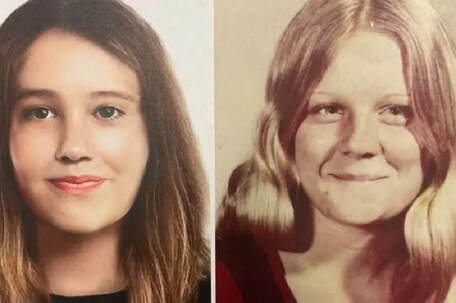 Susan Poole disappeared in 1972. Her remains were identified in 2022
Susan Poole disappeared in 1972. Her remains were identified in 2022
In 1974, skeletal remains were discovered in Palm Beach county, Florida. It was a teenage girl that had been tied up to mangroves. The remains were eventually linked to Susan Poole, 15, who had been missing since before Christmas in 1972. A composite sketch made of her failed to produce any leads. She became a cold case of an unidentified female until 2015, when her DNA was submitted to a missing persons database.
Palm Beach Sheriff's Detective William Springer explained in a recent press conference, "She was tied up in the mangroves with wire to a tree. She was skeletal remains, totally nothing left of her except bones. The family was happy to know what happened. You know it’s been a long time waiting to see what happened to their sister."
Everything changed when her DNA profile was matched via Othram, a forensics lab, to who turned out to be her 90-year-old mother and siblings.
Susan Poole had been living with family in a Fort Lauderdale trailer park when she disappeared. She had dropped out of school, and the police were never able to verify what she was doing before her disappearance.
Detective Springer believes Poole was a victim of serial killer Gerard Schaefer. He's considered the "best suspect" because of the similarities to other murders committed by Schaefer.
Source - Murderpedia
Palm Beach Sheriff's Detective William Springer explained in a recent press conference, "She was tied up in the mangroves with wire to a tree. She was skeletal remains, totally nothing left of her except bones. The family was happy to know what happened. You know it’s been a long time waiting to see what happened to their sister."
Everything changed when her DNA profile was matched via Othram, a forensics lab, to who turned out to be her 90-year-old mother and siblings.
Susan Poole had been living with family in a Fort Lauderdale trailer park when she disappeared. She had dropped out of school, and the police were never able to verify what she was doing before her disappearance.
Detective Springer believes Poole was a victim of serial killer Gerard Schaefer. He's considered the "best suspect" because of the similarities to other murders committed by Schaefer.
Source - Murderpedia
